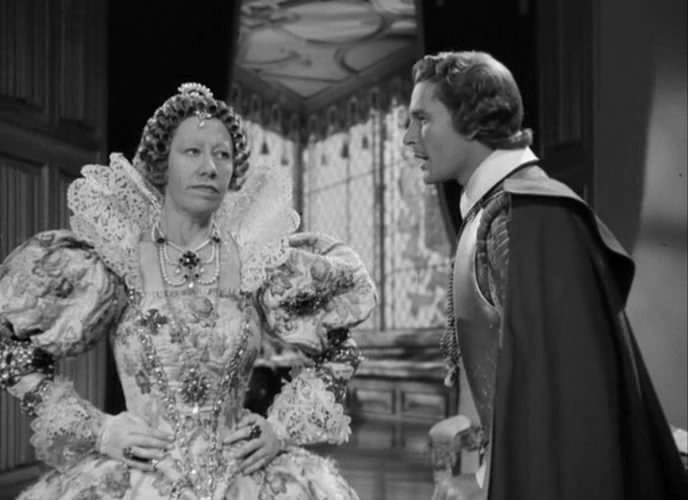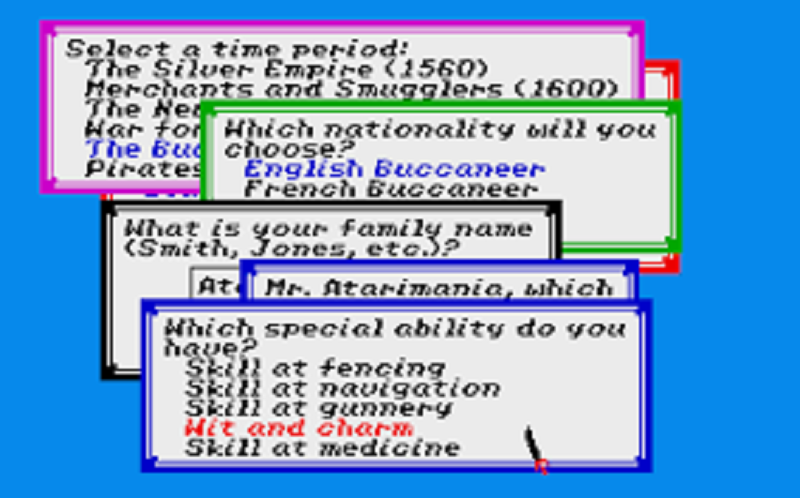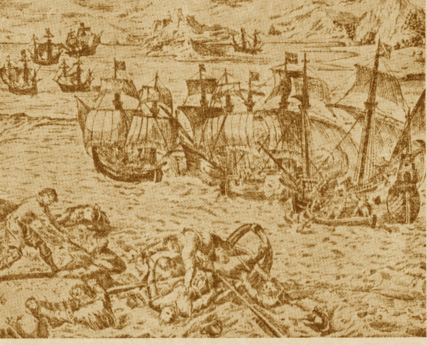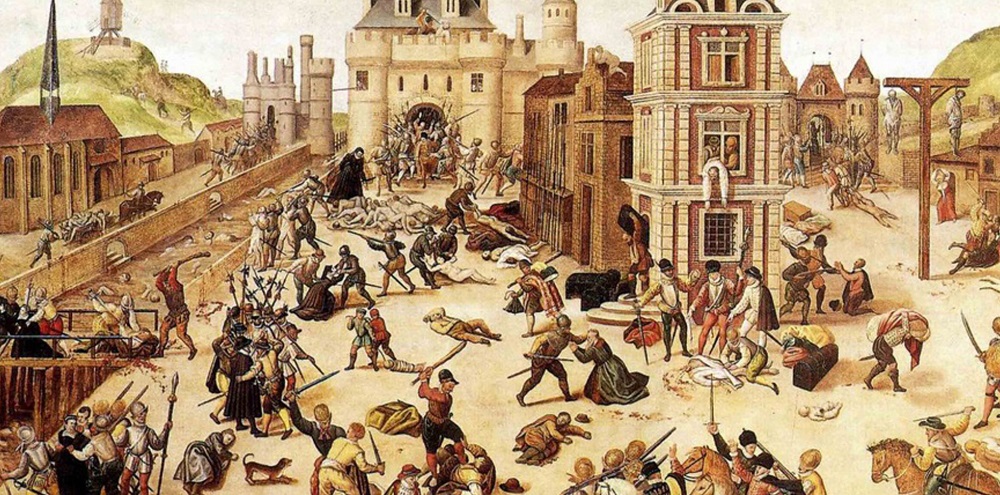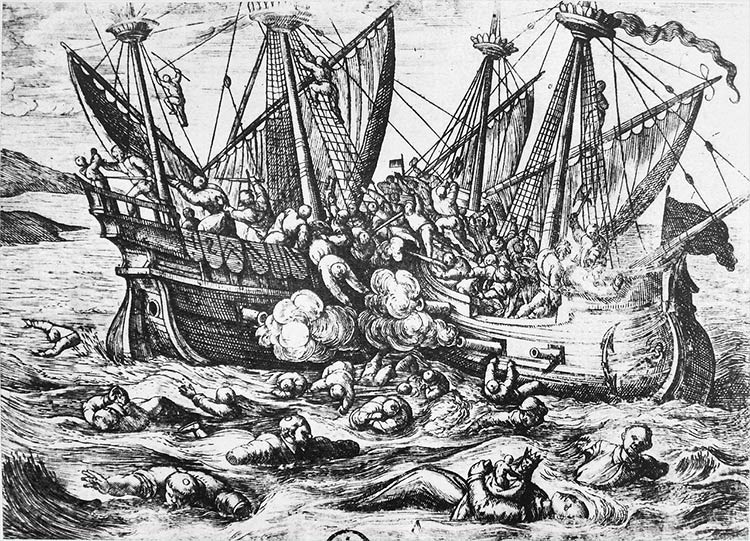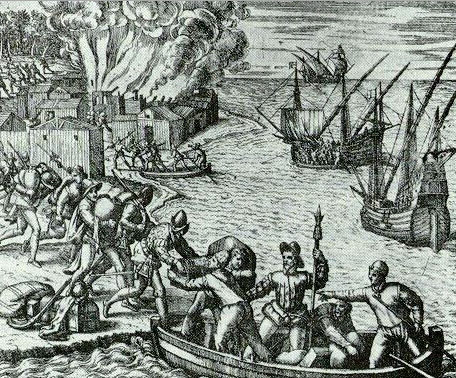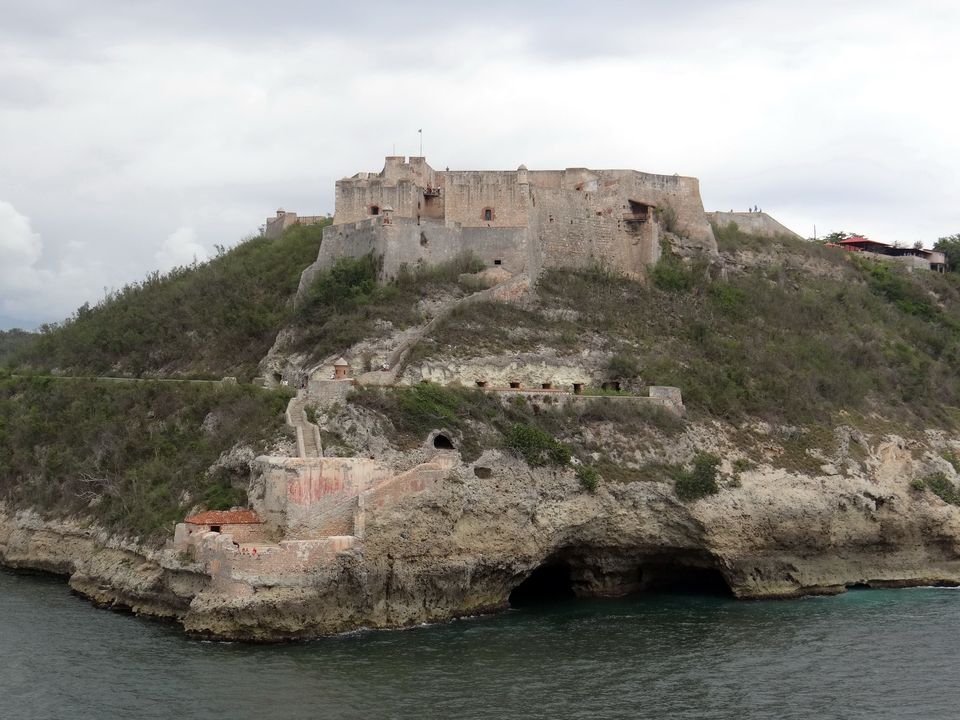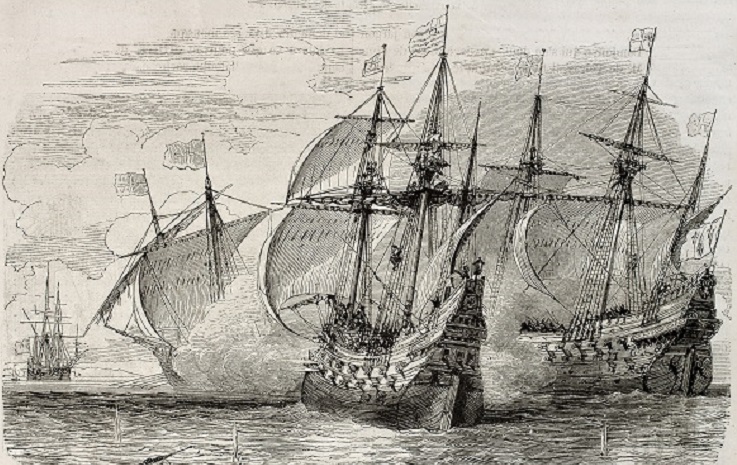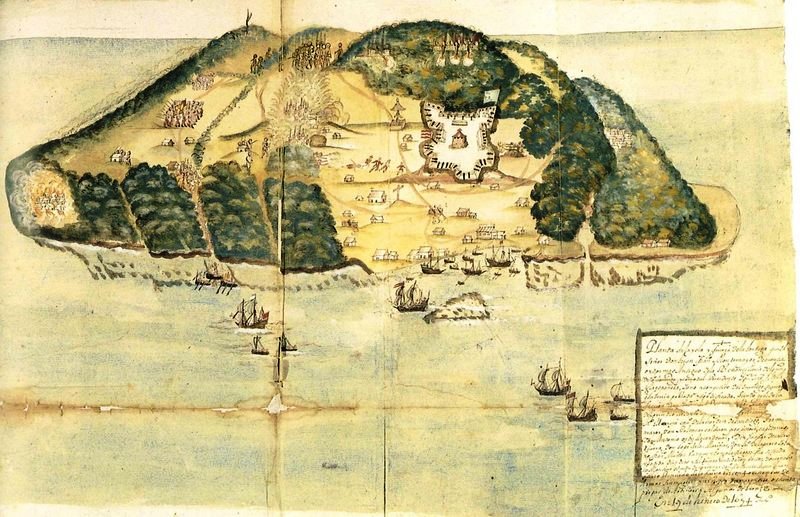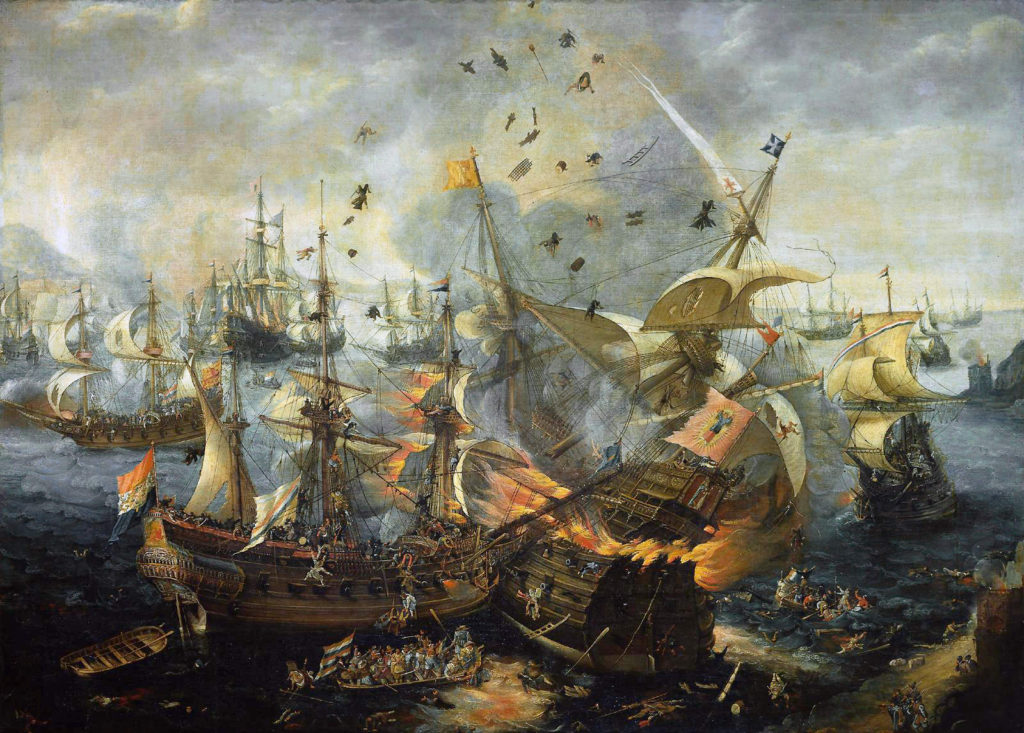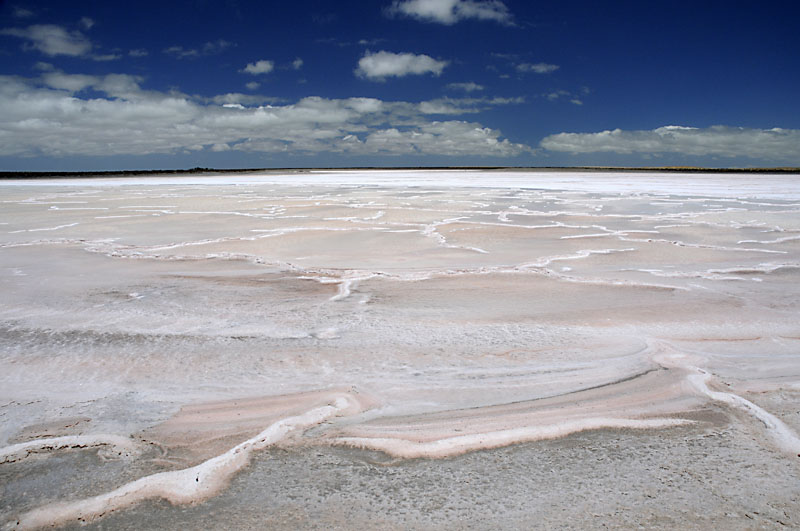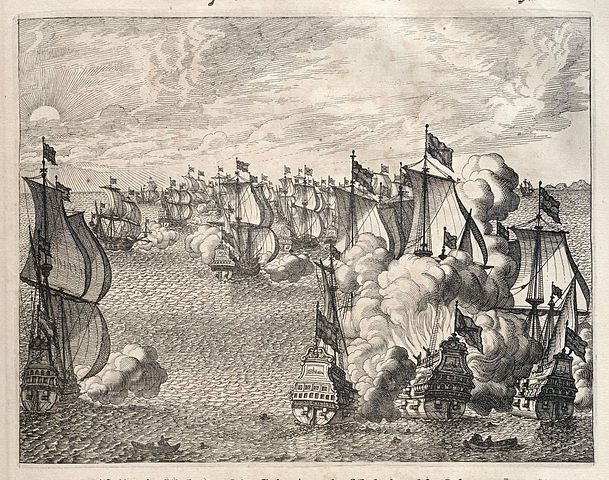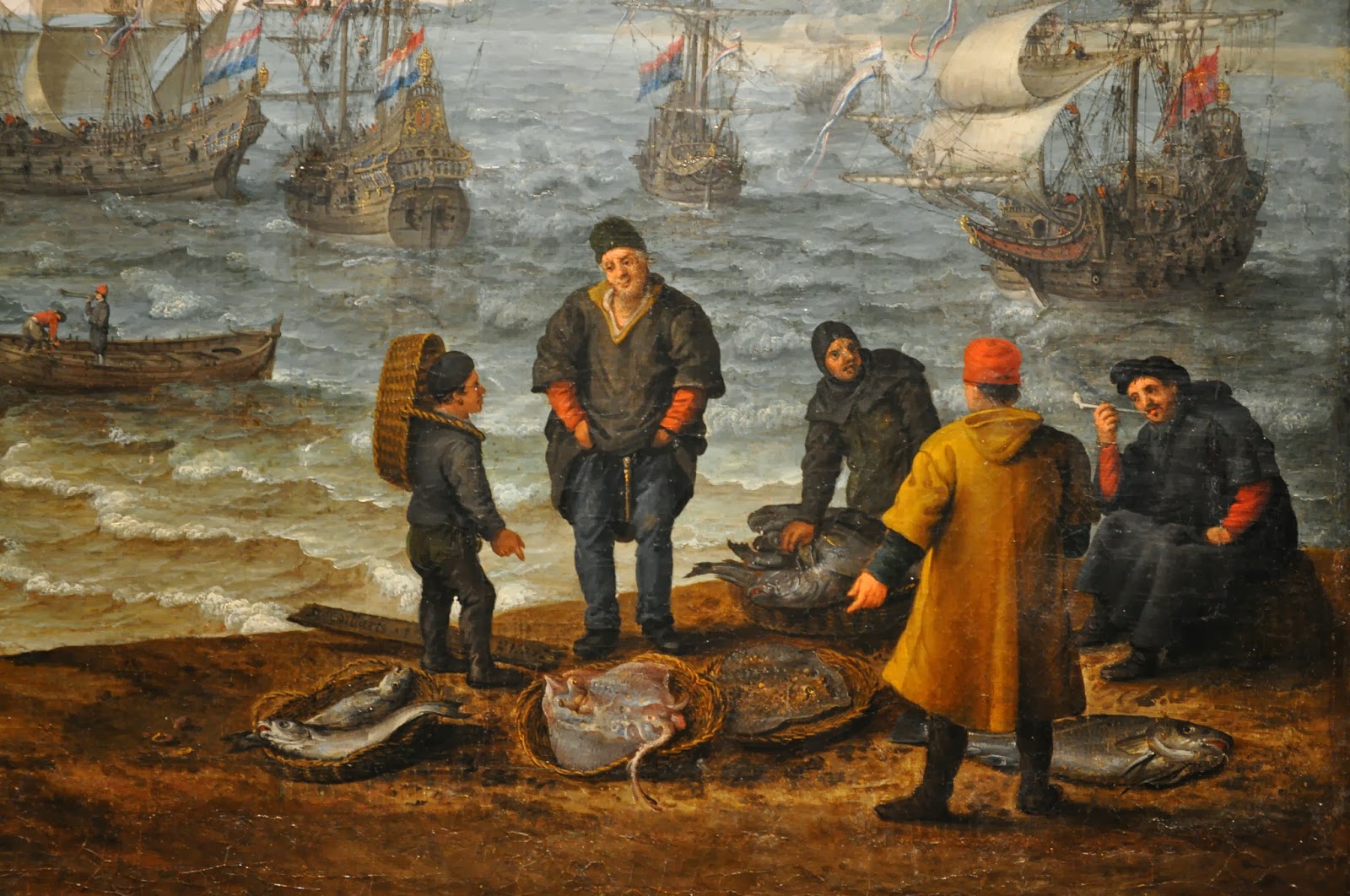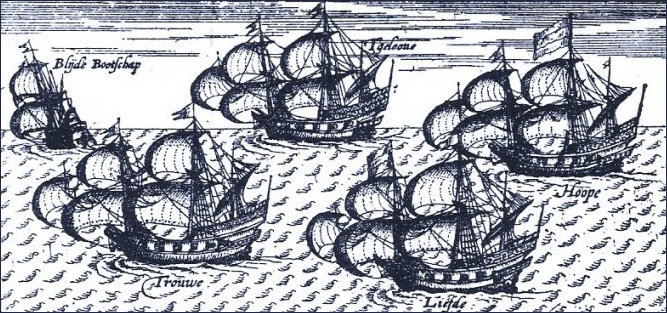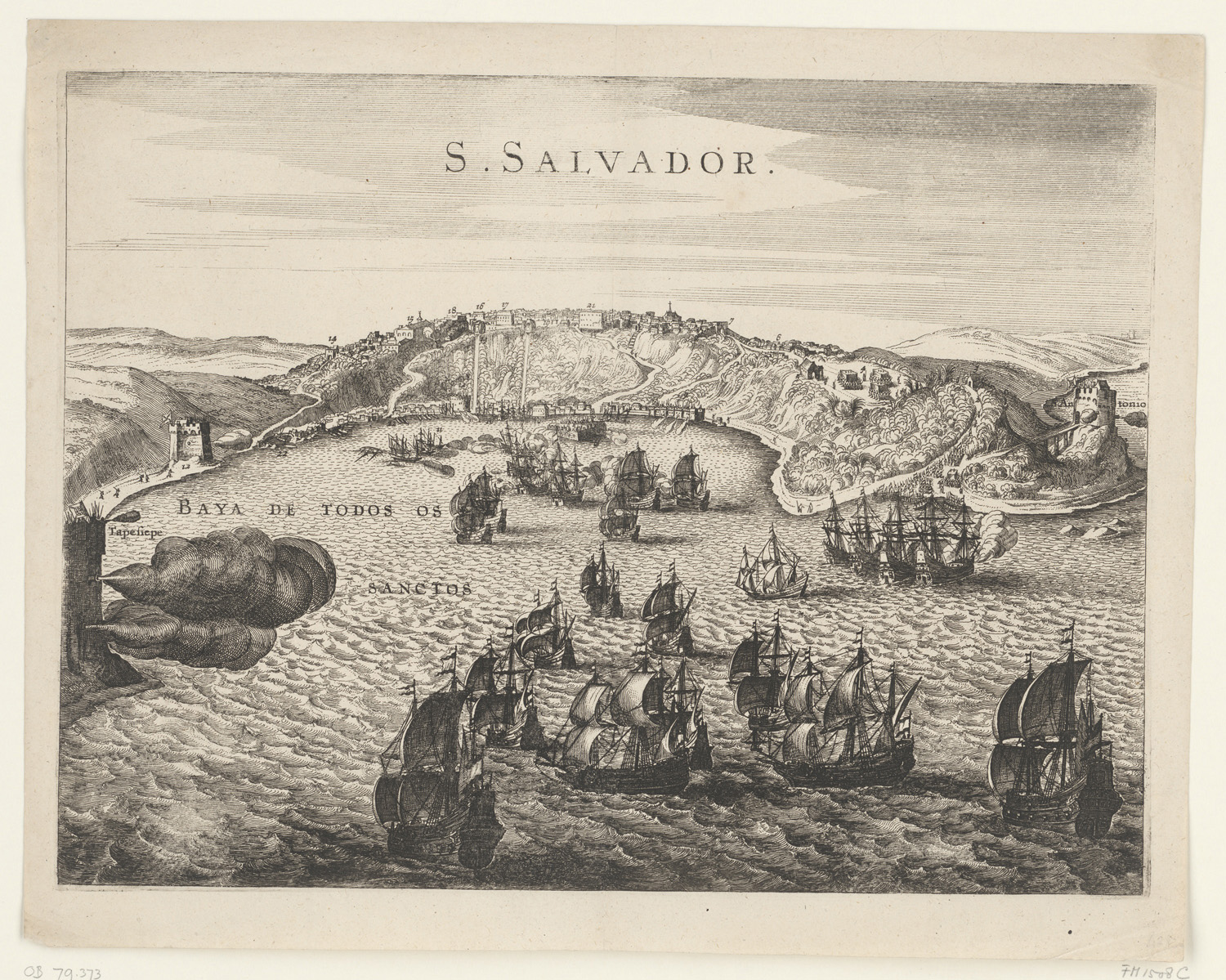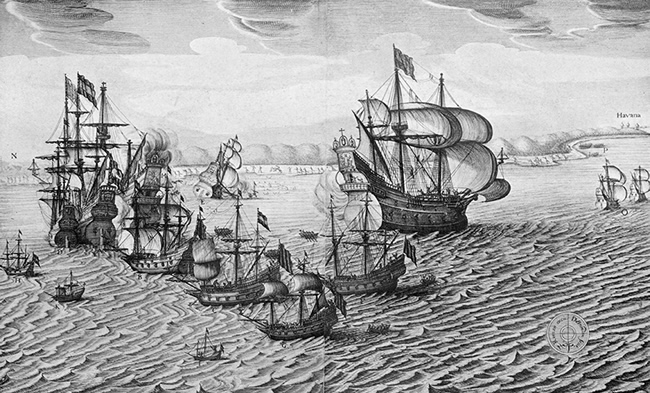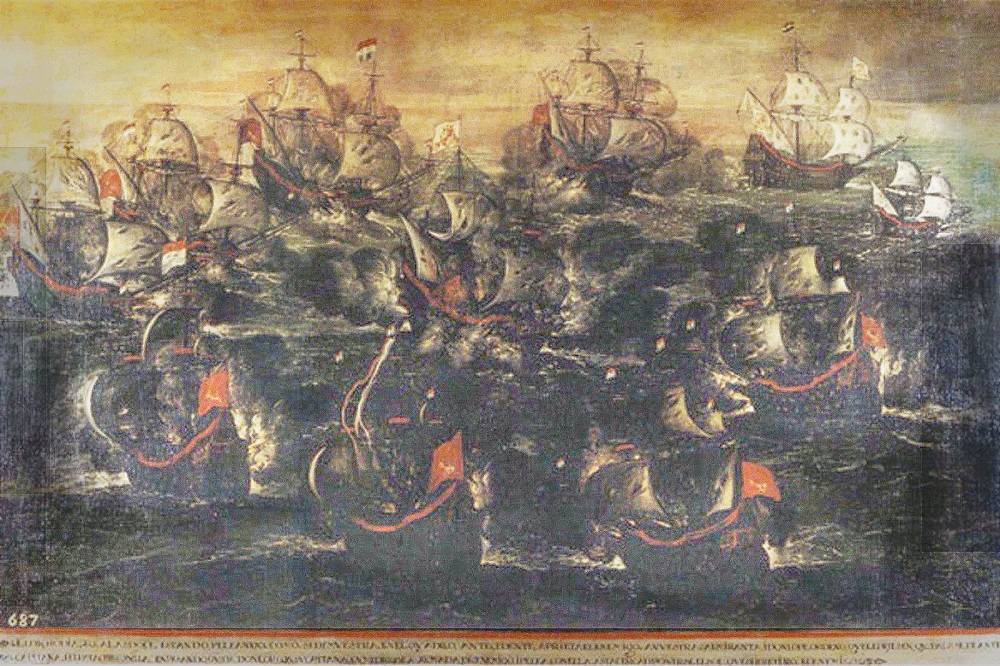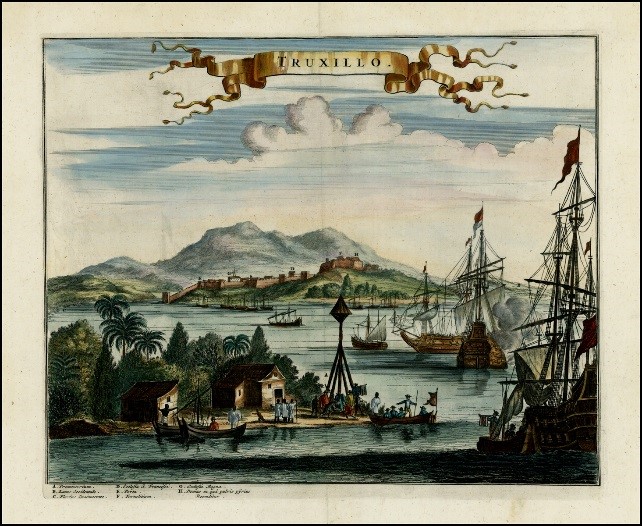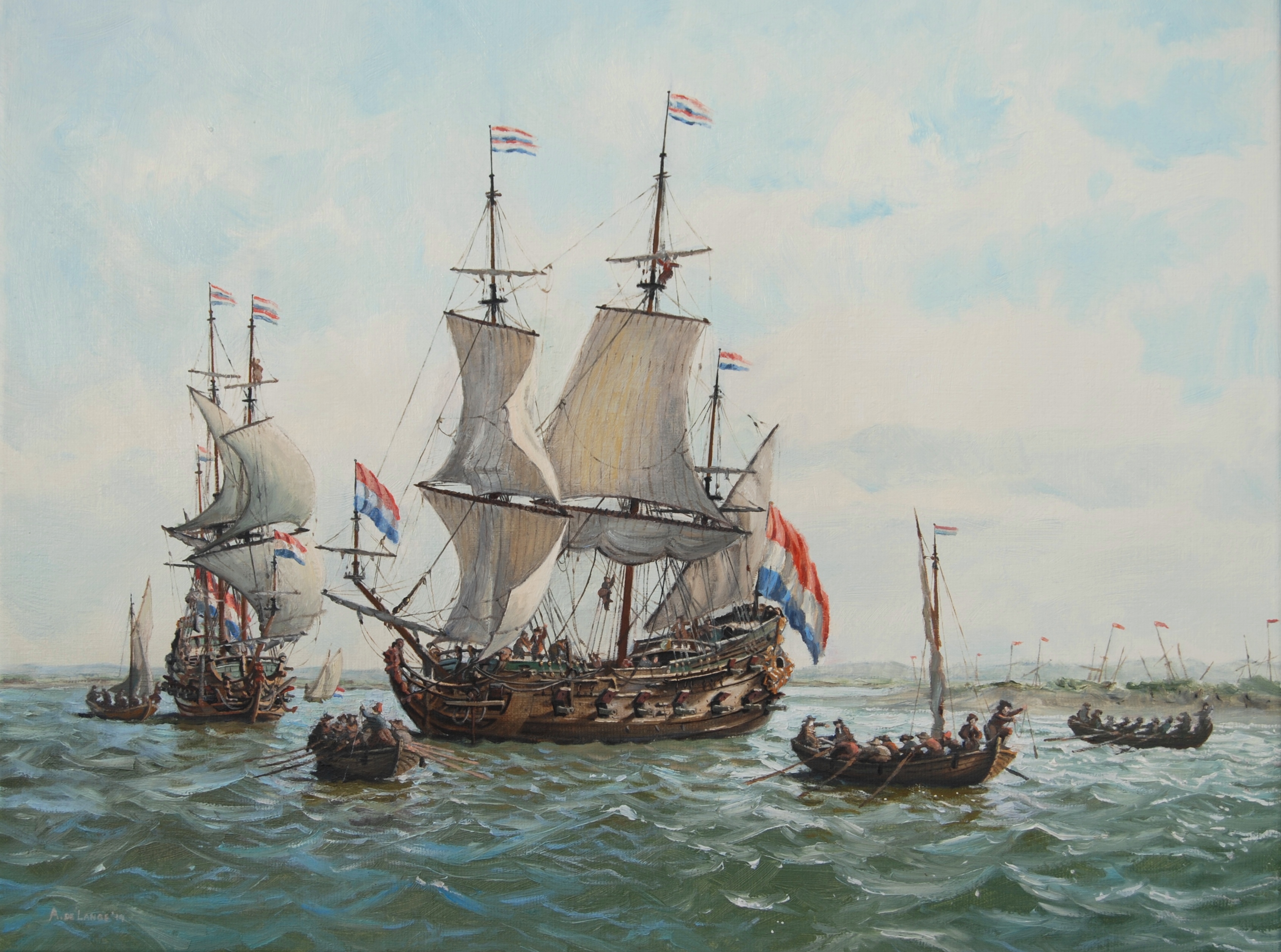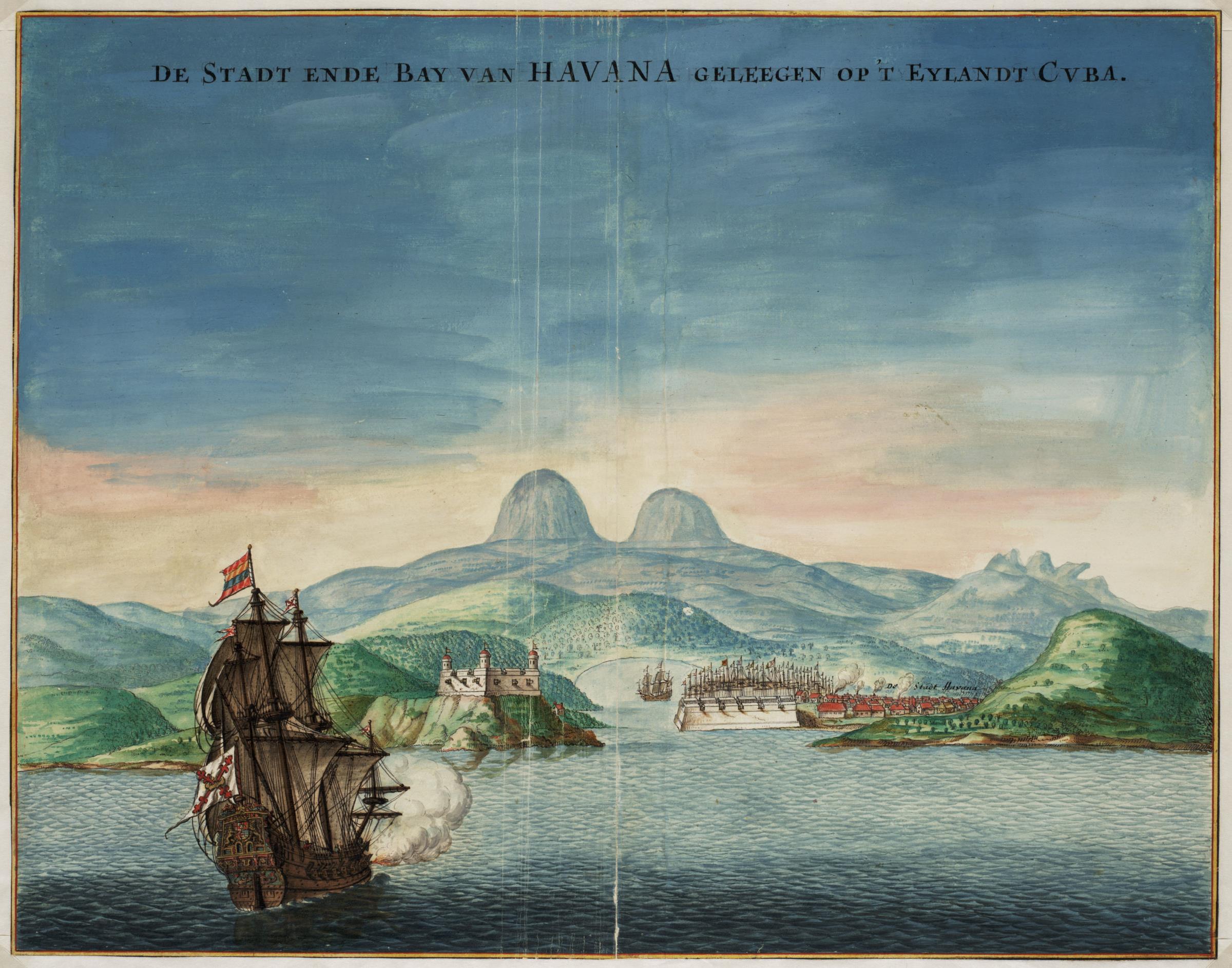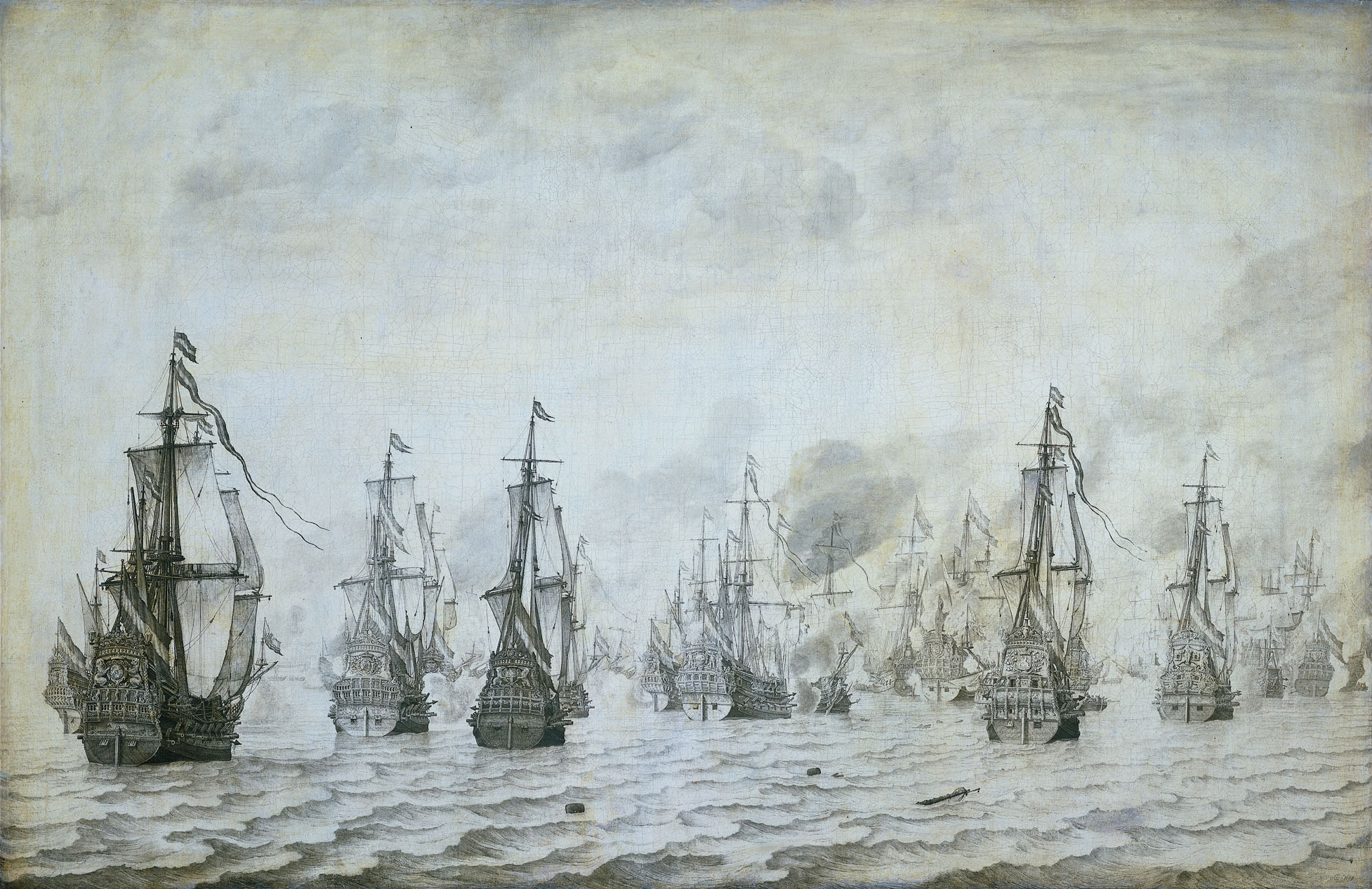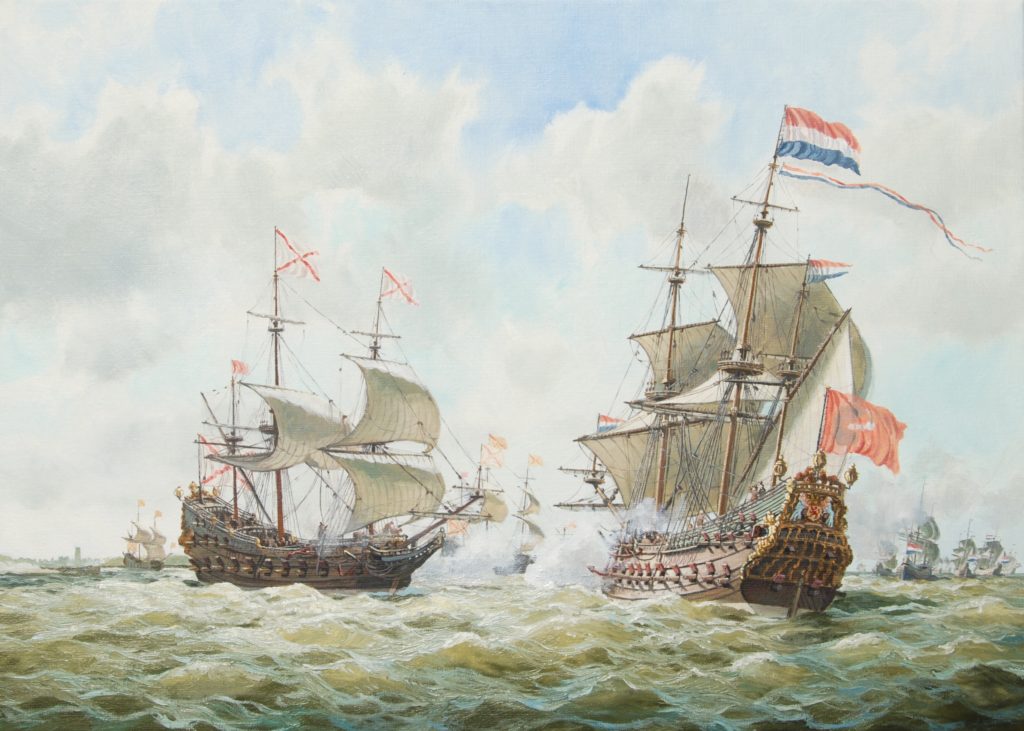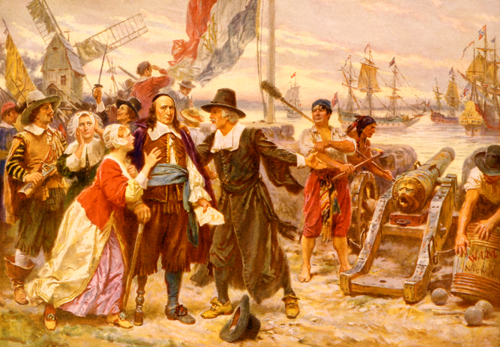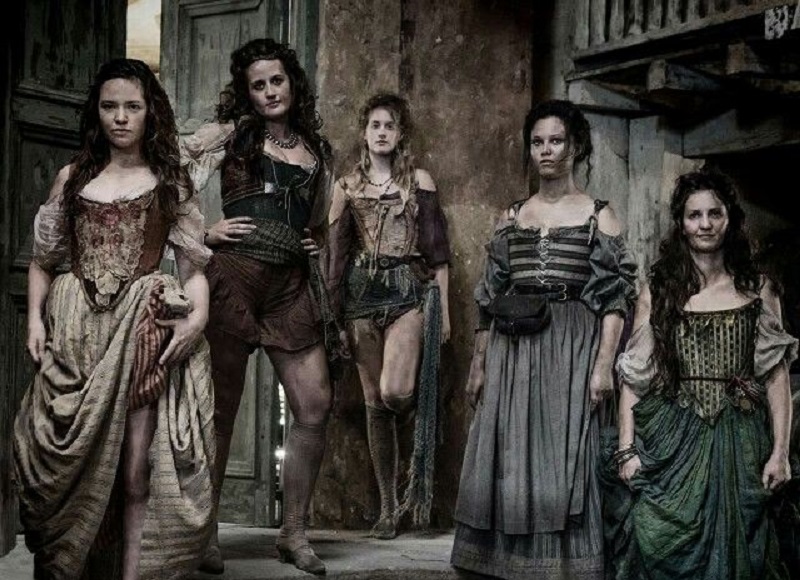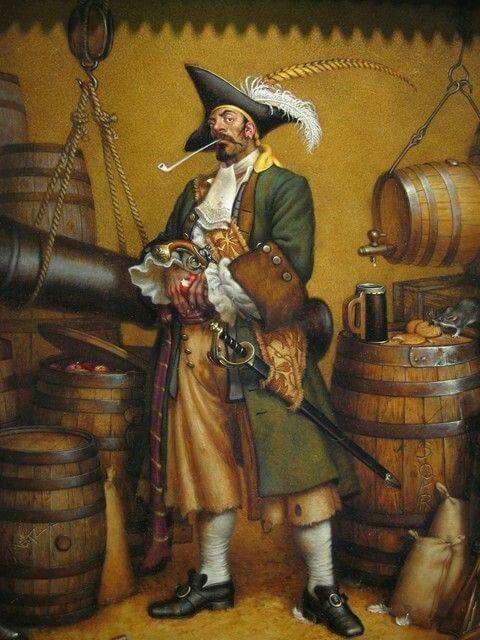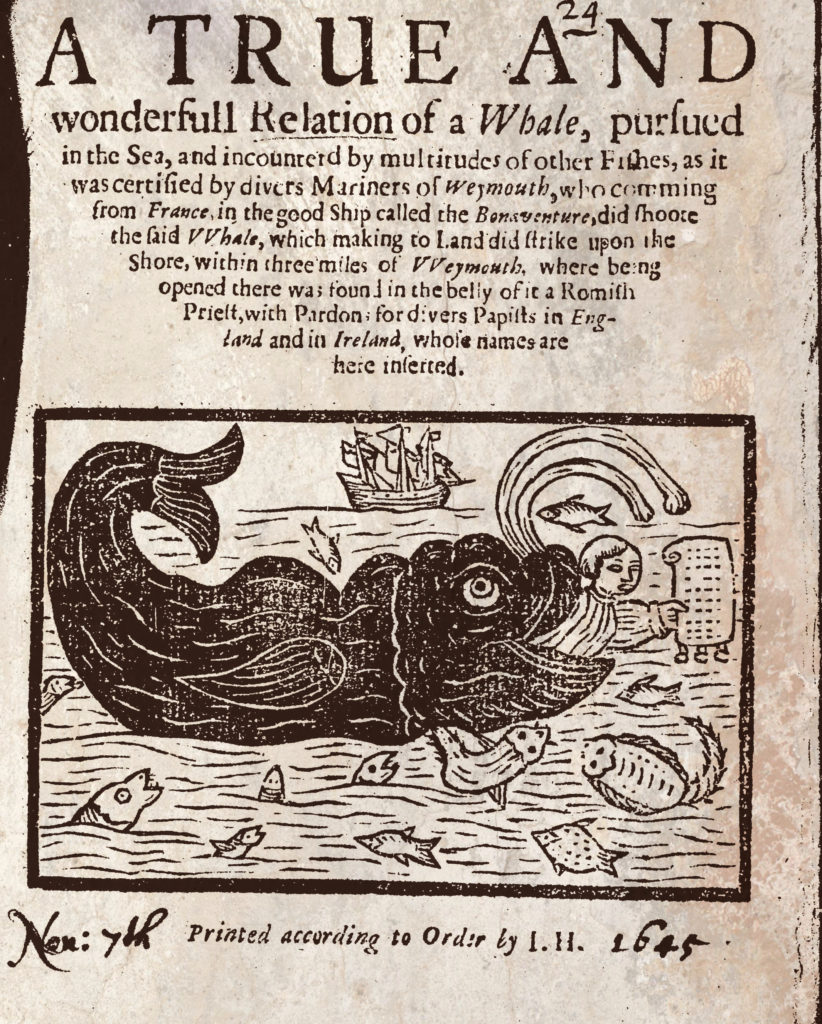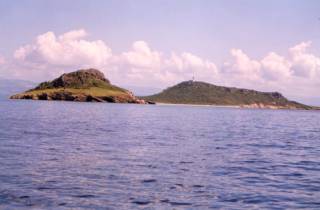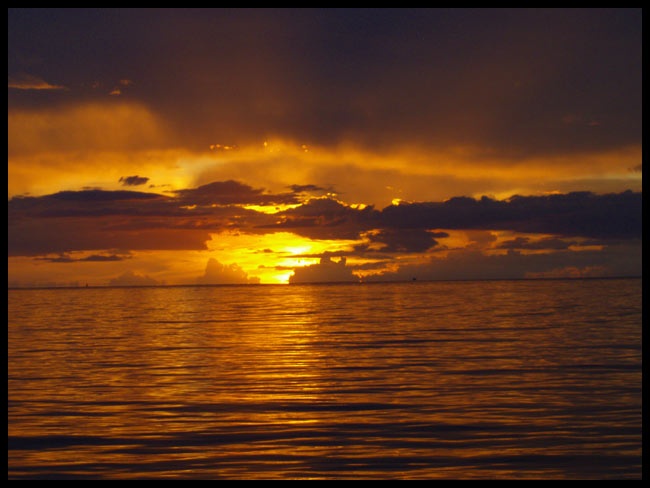– – – The Very Bloody History of Puerto Rico: Part II – – – A Timeline of History – The Pirates Emerge
PART 2 of the Pirates and Heroes of Puerto Rico: A Time Line of History

*******************Spain is at war with the World******************
———SETTING THE STAGE FOR THE CLASSIC ERA OF PIRATES!!!——–
First I want to apologize to my readers (if I still have any LOL) because of the six months that have passed since my last installment. My life has been very tumultuous and complex for months. Second, I want to apologize that this article has become so long. Let me explain. I have been continuing to research and write my book on piracy that I have been working on for the last decade. Much of that research has been in a parallel path lately with this article. So I found myself putting parts of my book into this actual article. I knew I was in trouble when I sent the article to myself and it was almost 60 pages long.
Sometimes I just don’t realize how much I write. So I had to go in and edit part of this article and segment it even more. What that means for you is that there are now going to be more installments. Not the three that I had originally planned. The good news is that the complete article is basically nearly finished, so there is no reason that I cannot publish the pieces in fairly quick succession as I had intended all along.
With that said – here we go… MK
From the great Hollywood epic swashbuckling movie “THE SEA HAWK”(1940)
(Flora Robson)
QUEEN ELIZABETH I: “Captain Thorpe, Do you imagine that we are at war with Spain?”
(Erroll Flynn)
CAPTAIN JEFFREY THORPE: “Your Grace, Spain is at war with the World.”
In Part 1 we ended with the Dutch attack. So now we will pick back up with the Dutch once again – but with some additional depth and background to our story…
In our last installment we learned about Puerto Rico and San Juan’s turbulent early years and its struggles to remain a Spanish possession. We covered the English attacks up through the Dutch attack of 1625 and Hendrickszoon’s ill fated expedition. This era in Caribbean history is marked by continuing Spanish dominance – however dominance in very noticeable decline.
Starting almost immediately after Cortez’s conquests and Ponce de Leon’s governorship of most the “Greater Antilles” islands (and the immense following influx of Spanish colonists in the first decades of the 16th century) – interlopers came onto the scene to attempt challenging Spanish power. Many of these were displaced peoples who hated the Spaniards. They were either forcibly relocated to Spanish America as punishment or they came there on their own accord to band together with others of their kind. The first of these were the Huguenots of France.
Everyone remembers the age of the buccaneers which IMHO is a very bad descriptor/label which over generalizes and categorizes this period quite inaccurately. It is almost exclusive to history written and defined in English even though this era itself and its heroes and characters overlap and blur into defined and undefined eras before and after.
I mention this because the era of buccaneers is generally thought to begin during the rise of the Brethren of the Coast in Tortuga (who were primarily French and Dutch) and the seizure of Jamaica from the Spaniards by the English and the resulting hive of English piracy concentrated out of Port Royal thereafter – so the 1650s. However, there is an extremely important era of piracy that began much earlier, which both precedes and overlaps into the so called era of buccaneers – and is badly neglected – if not almost entirely overlooked in most English written histories.
This important era of piracy which came long before the one that most educated people are commonly familiar with, is much more prevalent in NON-English sources, because the English were really some of the least active participants during this time-frame regardless of the famous Sea Dogs like Sir Francis Drake who we covered in our last installment.
The great Sid Meier defined the decades before the buccaneers in his landmark 1987 video game PIRATES, as the time of Smugglers, Merchants and Colonists spanning 1560-1640 and then the time of 1640-1660 as “War for Profit”. He is correct if we bundle it all together considering that “war for profit” was a strong motivator behind state sponsored piracy from the very beginning – as we see when we examine those attacks on Puerto Rico by the Dutch and English in the last decade of the 16th century and the first decades of the 17th.
However, though much less notable, there were actually even earlier attacks on Puerto Rico. I believe that Sid Meier – a game developer – (as well as most English historians) have described this era with the wrong overall label or description – and that it would be much better and accurately described as (in my own words) “The Era of Militant Religious Turmoil and Migration” MK.
We know that European history from this time was dominated by the wars of the Reformation – which had raged on from the time of the German peasant revolts to the end of the Dutch revolt which effectively ended the wars of religion in 1648. None of the early non-Spanish colonialism, the merchant support behind it and smuggling resulting from it – as well as the war for profit – would ever have been able to take place without the religious turmoil (Protestant vs Catholic) and subsequent resulting militant refugee migrations that followed.
This was basically the Protestant Reformation spilling over into the Caribbean. There were two notable large sized groups who came into the Caribbean of this time –
1) the Zee Roovers from the Low Countries militantly going after the riches of the Spanish Empire early on in order to both profit from and to grievously injure their mortal enemy during the Eighty Years War of rebellion for Dutch independence (1568-1648) – and –
2) the Huguenots of France and the Low Countries who were brutally persecuted (losing the Wars of Religion) and many if not most deported by their native and very Catholic homeland France.
The Huguenots are an interesting group to study as they were a large freedom seeking population who came to hate their own French government for their extreme brutality and for throwing them out of their own country – based on lawful edicts (and the revocation of preceding edicts) issued by both the Church and the King (or at the very least many individual towns pressuring their Huguenot citizens to leave with severe discrimination and persecution).
These persecutions are famous now and preserved forever in contemporary prints and woodcuts illustrating heinous massacres – the worst of these being the infamous Saint Bartholomew’s Day massacre in which thousands of Protestants entered Paris for the wedding of Queen Margot to Henry of Navarre(a Protestant himself) not realizing the French Royal family would force Henry to take the Credo and declare himself Catholic or be murdered by them. As a result a day later, the heart of Paris ran red with blood and piles of Protestant corpses littered the streets – “turning Paris into a great cemetery”.
To be fair, the end of effective Huguenot power marked the end of the so called Wars of Religion in France. This was a dangerous civil war which nearly ended the French monarchy and saw some of the most powerful, influential and militarily skillful nobles leading the Huguenot faction. If they had won (and they nearly did) the history of the world would be entirely different today.
Imagine a French republic two hundred years before the one we are familiar with now. Imagine no French Revolution and the great revolution in banking and finance happening in France instead of Holland and later England. France might have become the great colonial power upon which “the Sun never set” – and the later wars with England might never have happened at all – or for different reasons. France might have been MUCH more powerful but much less aggressive. With no Richelieu, Mazarin or Sun King there would have never been a War of Spanish succession or indeed many other famous wars for that matter which Louis started or participated in. I digress….
The Huguenots not only hated their native Catholic France, they also hated just as equally that most fervent leading Catholic power in the world – the Spanish Empire – which forced the will of the Holy Inquisition and the rising power of the Jesuit order upon the world. Many of these men went north into the Netherlands to seek freedom among the Dutch rebels – who hated Spain every bit as much for the Duke of Parma’s atrocities and depredations inflicted upon the Protestant Dutch population.
Many of these Huguenots were not just simple hunters. There were many among them who were skilled professionals in numerous different trades. There were Huguenot horologists, goldsmiths and gun makers among the best in Europe and many of these fled to the New World to seek a better life.
It was these Huguenots who founded the first real free pirate havens and who aggressively attacked Spanish cities and ships throughout the remainder of the 16th century and into the 17th. It was these exiled Frenchmen who helped to established a French presence in the Caribbean and whose children a generation later were pivotal in creating the most famous pirate haven in history – Tortuga.
It was these same men who moved across into what we now know as Haiti (then called Hispaniola). These men hunting in two and three man teams – the feral cattle and pigs of these islands – became known as “Boucaniers” because of the animal skins they took, clothed themselves in, and sold – along with the cured smoked “jerked beef” that they processed and sold, which became a staple food/purchased cargo item for many passing ships.
Boucanier and Buccaneer seem like such romantic terms now but this has always amused me because I can hardly imagine the latest pirate movie being entitled – “Meat Smokers of the Caribbean” LOL!!!
The first record of Huguenot piracy I have been able to uncover is from 1523, where we find one Jean Fleury, captain of a corsair fleet owned by a rich merchant in Dieppe named Jean Ango. This fleet captured a Spanish galleon containing “MOCTEZUMA’S treasure” which Cortez was sending back to Spain through one “Charle Quint”. Remember that Cortez had begun his famous expedition against the Aztecs only four years earlier in 1519.
That same year another Huguenot, one Guillaume Chaudet, son of a wealthy merchant of Honfleur, captured a Spanish vessel coming from “Porto Rico” loaded with a rich cargo of sugar.
*NOTE: Sometimes I can’t help but mention things I find in research. Another captain named Charles Fleury obtaining a letter of reprisal from the King of France departed Dieppe in 1618 with five ships and 300 Huguenots making an expedition to Brazil attempting to take Porto Seguro. After a failed attack Fluery’s men abandoned him and he was left with only his ship alone and one hundred loyal men. I think this man must somehow be related to the earlier Fleury from a century before. Fascinating!
Huguenot corsairs attacked not only vessels carrying rich cargoes, but also Spanish towns situated on the coast (Spanish Main) and the many islands of the Spanish West Indies. Between 1536 and 1568, 152 Spanish ships were captured in the Caribbean and 37 between Spain, the Canary Islands and the Azores.
It is interesting to note that these corsairs not only plundered Spanish ships and towns, but also carried smuggled goods and traded with Spaniards themselves selling their ill gotten goods to the inhabitants of many Spanish colonies in the West Indies.
Amongst the places attacked, were first and foremost San German, Puerto Rico (towards the island’s southwestern corner) which was invaded in 1528 by French corsairs. This force not only destroyed the town but ravaged the surrounding country-side and sacked the small satellite towns of Guanica, Sotomayor, Daguao and Loiza. The French attacked the same area again in 1538 and later once more in 1554. San German is the second oldest town in Puerto Rico and is known for its old church – a place I plan to visit on my
next trip this winter.
Next was Santiago de Cuba – ransacked by Jacques de Sores in 1534 with 3 ships and 300 men. The following year (1535) he attacked Santa Maria (Cuba). In July 1535 he joined forces with Norman François de Clerc and seized Havana, where he burned the churches and seized an enormous amount of booty. François de Clerc had been given the first official French privateer’s commission from the King, allowing him to capture enemy vessels in the Americas. Less than a decade later Cartagena was also viciously attacked by a joint force of 300 French Huguenots and English “protestant” corsairs in 1543.
In 1573 another Huguenot, Guillaume Le Testut, a corsair who was a member of the Dieppe school of cartography, joined forces with that famous English gentleman of fortune Francis Drake. The two of them successfully attacked a large Spanish convoy carrying gold and silver from Peru after dealing with a strong Spanish escort. This was near the port of Nombre de Dios on the isthmus of Panama. Unfortunately, Guillaume Le Testut was killed in action.
I believe the success of this earlier action is why Drake chose to return there after his the failed attack on Puerto Rico. He wanted to repeat his earlier success there – and had a positive outlook based on his good memories – but instead of another victory, he would follow his Huguenot friend to a watery grave eighteen years after.
TORTUGA: So prominently known now as a major hub of historical piracy (if not THE capital of Caribbean piracy for most of the age), Tortuga began its infamous western colonial timeline under Spanish control discovered by our good old friend Christopher Columbus himself. Columbus named the place Turtle Island in 1492 due to its round bulbous shape emerging from a low fog.
A handful of Spanish colonists settled there during the massive Spanish immigration to the New World over the following century. Ponce de Leon became the first governor of Hispaniola (modern-day Haiti) – of which Tortuga was considered a part. A few successful Spanish tobacco plantations are noted to have been present on the island by 1598.
The future home of the Brethren of the Coast – known as Ile de la Tortue (Turtle Island) had its official French beginnings in 1605, when the French decided to send an expedition west from Saint Christopher island (now Saint Kitts) which they had already successfully – partially – colonized (the northwestern coastline of the island). This French expedition initially began to settle across from Tortuga on Hispaniola but were not welcomed by local militant Spanish landowners who set upon them – forcing them
back to their ships.
So the French decided to attempt occupation of the sparsely populated Tortuga island instead by running off the Spanish planters there. They were there for nearly two years before the Spaniards really took notice and decided to drive the French out. They were successful to a degree, but the French with no women and children to weigh them down, would simply retreat into the hills and used canoes and tartanes to get about at night moving back and forth from Haiti to Tortuga.
When the Spaniards would leave, the French continued to colonize and sent for more settlers. By 1620 the hardy French hunters had established a rough little trading port and sold their wares to passing ships.
With massive Dutch incursions into the Caribbean by the mid 1620s and a resulting Spanish power vacuum, more and more settlers came to Tortuga and many non-Spanish ships stopped there to trade, stock up on victuals and make repairs. It was the small safe haven of Tortuga at this time which saw the beginnings of the age of the buccaneers.
A MARKED SPANISH DECLINE: We will pick back up again on our discussion of Tortuga up ahead. However, I must now pause for a bit to explain what this has to do with Puerto Rico. A brief discussion of Tortuga is necessary to set the stage for all of the later notable pirate characters to come – which had dealings with – in or around – Puerto Rico.
The great age of piracy in the Caribbean would never have come about without an independent Tortuga and that central – pivotal pirate haven would never have been able to exist without a notable major decline in Spanish power and naval presence occurring at this time. So let us discuss this decline and the major events that brought it about.
When thinking of or discussing the decline of Spanish naval power, many educated people would immediately think of the great loss of the Spanish Armada in 1588 against the English. However, most do not realize that there were two other Spanish Armadas a few years after in 1596 and 1597 in reprisal for the humiliating Anglo-Dutch attack and sack of Cadiz in the summer of 1596. https://en.wikipedia.org/wiki/Capture_of_C%C3%A1diz
Once again the weather was much more to blame for Spanish failure than actual military engagements. By 1604 the Anglo-Spanish War was over. England was in a poor state. Elizabeth now in her grave left her people a bankrupt treasury largely spent on prosecuting endless and profitless wars and a broken shell of an army.
With the army frittered away helping the Dutch in their endless war of rebellion against Spain – and one of every two English soldiers buried in Ireland from the almost genocidal war which had lasted as long, England could no longer afford to confront Spain directly as she had done for decades.
Spain on the other hand bolstered by piles of Aztec gold and Potosi Silver coming in regularly from the New World, turned all of her attentions upon the so called Dutch Rebellion in Flanders (Eighty Years War 1568-1648) and to protecting her West Indies possessions – “NOVA HISPANIA”. Spanish decline in naval power actually had little to do with the loss of the Armada which has become an almost patriotic sort of historical propaganda today IMHO.
Most don’t even seem to remember today that the Dutch blockade prevented the Duke of Parma’s Army from even being able to board the Armada vessels – which was the whole reason the entire enterprise occurred to begin with. This caused notable delays which allowed the fireship attempts upon the anchored fleet – forcing them to cut their cables to get free – and resulting in the ensuing fateful engagement occurring prior to the great storm which largely destroyed the 1st Armada.

England was never in threat of invasion because the army was never aboard. However I am certain that the Dutch probably wished afterwards that they would have allowed the army to board the Armada ships – LOL. In addition, as you read in the lines and paragraphs ahead, Spain endured consistent ship losses far exceeding the numbers lost with that first Armada and consistently continued to somehow bounce back time after time.
The Spanish Armadas now aside, there were numerous other and much more grievous Spanish losses which were far greater in the decades that followed of which we are seldom treated to in English written history. In the 1602 and 1603 Dutch victories at the two Battles of Sluis, the United Dutch Provinces gained control over the vital Scheldt River cutting the Spanish off from being able to resupply their forts and cities in the Southern Spanish held Netherlands by sea.
These Spanish defeats signaled a continuing turning of the tide in favor of the Dutch for the remainder of the war. This also meant that more Dutch privateers/zeeroovers could now slip free to harass Spanish shipping almost unhindered. In 1605 the King of Spain made a great proclamation – ordering that all “foreigners” caught in piracy, smuggling, or illegal trading, were to be put to death immediately by those who captured them without any kind of trial or appeal necessary or authorized. This proclamation led to what some historians now call “The Salt War”.
If there was one thing the Dutch required more than any other commodity for continuing industrialization it was salt. During the late Renaissance, the rise of the numerous rich trading cities of the Low Countries (and the Hanseatic League) depended on SALT as a key driving economic factor to feeding and growing labor and sending ships on trading expeditions.
The Dutch coastal towns went from having 150 herring busses before the beginning of the Dutch revolt to having over 4,000 by the end of it. Salt was necessary to pack the ever increasing catches of the herring trade and preserve it for shipment and later use.
Salt was necessary for curing meats and in the manufacture of both butter and glass. Salt became the essential element to feeding sailors on the sometimes two year long expeditions necessary to to bring back pepper from the far east and to continue with global expansion. So you can quote me when I say: “Without Salt there would have been no Pepper” LOL MK.

The United Provinces of the Netherlands lacked a large natural supply of salt but Spain enjoyed an abundance both on the Iberian peninsula itself and in many of her new world possessions.
Before the rebellion, Dutch ships put in at Iberian salt pans often to fill their hulls with the valuable white mineral. A salt pan is usually a large naturally occurring deep flat coastal deposit or fields of salt above ground where no plant life can grow. Spain’s annexation of Portugal and its territories in 1580 caused the Dutch to look elsewhere for salt. Dutch ships would still risk putting in at Iberian salt pans or the Cape Verde islands off the coast of Africa when Spanish ships were in the area.
However, the King of Spain’s 1605 edict effectively made men’s lives forfeit if they were caught loading salt from these sites. Dutch traders were forced to look for new places in the Americas to find the precious commodity. By 1600 over 100 Dutch ships a year were loading salt from the uninhabited Araya peninsula (Venezuela).
The first problems arose when the Spanish authorities got wise to this and began to patrol the coastline with Guardia Costa patrols. A fort was planned to guard the mouth into the harbor and Spanish engineers and nobles surveyed the sight and began preparations.

MASSACRE!:
In 1605 Spanish Admiral Luis Fajardo with a fleet of 14 galleons and 4 fast pataches/zabras caught a large group of 11 Dutch merchant ships and smuggling vessels loading salt unawares. The Dutchmen were all captured. All of the Dutch pilots and ship masters were separated from the crews and hanged on the coastline. The Spaniards then began shooting the crews with musketeers.
Dutchmen ran for their lives and by the end of the day over 400 Dutchmen were butchered in an event now known as the Araya Massacre. Fajardo stayed on station for another month and captured seven more Dutch ships. Returning survivors related what had happened and the Dutch wanted revenge! Their next convoys showed up in larger numbers with soldiers and warship escorts. Numerous small battles took place to dissuade the Dutch but they continued to harvest it until 1623 when the Spanish Fort Santiago de Araya was completed.
The Dutch then searched for new places to obtain salt. The Dutch even landed on Puerto Rico and performed a survey of the island finding salt there. This SALT was one of the reasons for Heindrickszoon’s attack.
Interestingly enough, Heindrickszoon actually attacked Fort Santiago himself before he withdrew to attack Puerto Rico. Realizing it could not be easily taken or neutralized he retired – (and a more deliberate attack there would not have been in keeping with his orders as we discussed in the Part I).
The Dutch traders and salters immediately turned to Tortuga which had a large salt flat at the mouth of the Unare River. Both Saint Martin and Curacao were selected as colonial enterprises because they had good salt harvesting potential. The foreign presence in and around Tortuga was a definite annoyance to the Spaniards who attempted to keep out the interlopers but with only rare success.
I uncovered one example of two Spanish captains under orders from the Captain General of Cartagena to specifically patrol the area around Tortuga. The record shows that their two Spanish “caravels” (zabras?) were able to overtake a Dutch, an English, and two other French vessels running together around Tortuga. They were able to capture three
of the ships and put 300 “heretic” prisoners to death – losing only 5 dead and 25 wounded.
Back in the Netherlands of 1605, the people were outraged by the Massacre of Araya viewing the poor victims as non-combatants. Revenge was demanded and an immediate victory was achieved by Admiral Willem Haultain, with the Dutch destroying a large fleet of Spanish transport ships off Dover. This was hardly enough and the fun was just beginning.
In 1606 the Dutch raised a fleet of 34 warships to directly attack Spain in their home waters. By March 1607 they were fitted out, ready for war and departed. Admiral Jakob
Van Heemskeerk captured ships all along the journey to Spain and questioned their captains.
The Dutch fleet then blockaded the waters off of Cadiz in April (and effectively Seville and San Lucar up river as well) at the mouth of the Guadalquiver River. Heemskeerk hoped to intercept Admiral Fajardo’s fleet as Dutch intelligence reported it was recently arrived back in Spain from the New World. They learned that Fajardo had retired and his second in command Admiral Juan Alveres de Aviles had taken over. It was also learned that the Spanish fleet was in Gibraltar.
Heemskeerk ordered the Dutch fleet to immediately set course for Gibraltar regardless of the formidable fortifications over-watching the harbor. Upon arrival, he ordered his fleet to sail headlong straight for the Spanish ships with no broadside gunnery brought to bare.
His plan was to board and destroy the entire Spanish fleet in one fell swoop. Aviles learning of the Dutch advance put his war galleons in line and fired at the invaders during their approach. In a brutal four hour long fleet boarding action and fire-fight that went on till night-fall, the Dutch furiously captured, looted and burned every Spanish galleon.
Four large war galleons and nine other mid sized warships were either beached or burned to the water line and the Spaniards burned their own ships which had run aground fearing the Dutch would land and capture them. Over 2,000 Spaniards were killed in the battle and the Dutch ships were seen moving back out to sea under constant cannon fire from the fort – all the while tossing more prisoners overboard who were bound unable to swim.
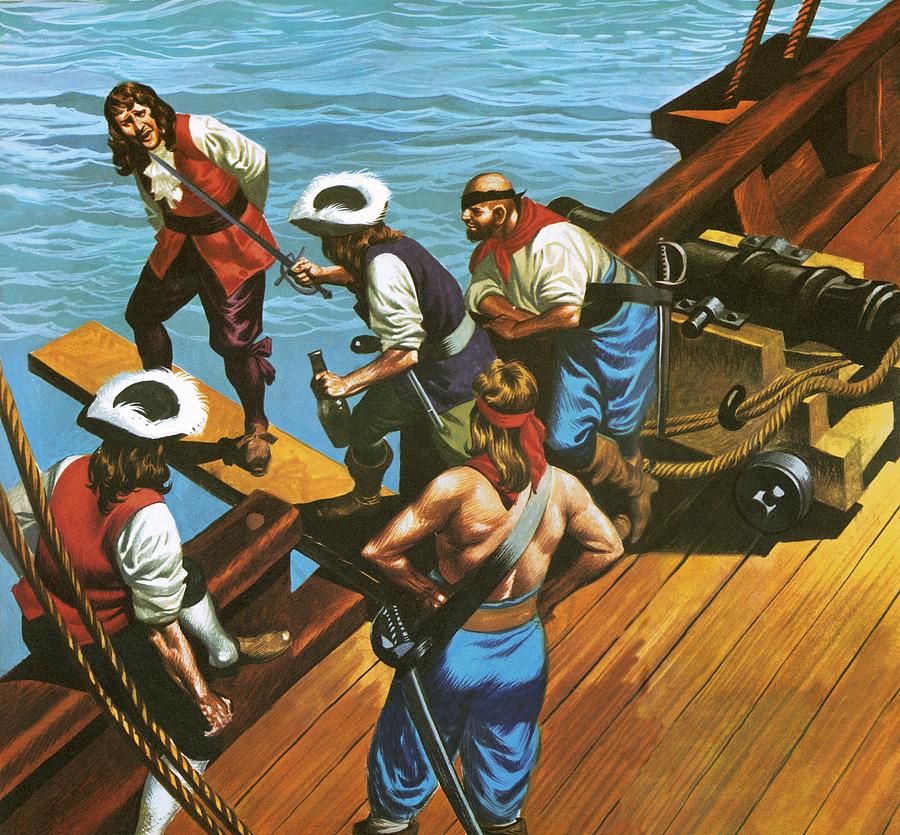
This practice known as “Voetspoelling” (foot washing) was a cruel form of wartime capital punishment sanctioned and encouraged by the Dutch States General which is where the famous practice of “Walking the Plank” we know now – directly comes from. It was reported that 356 of these bodies washed ashore and were buried by the Spaniards. Heemskeerk himself was killed in the action along with around 200 Dutchmen. The Dutch had destroyed a total of 12 Spanish warships – four of which were large war galleons (800 tons or so – capital ships/ships of the line for that time before there was such a thing).

The 1607 Battle of Gibraltar was over and the Dutch got their revenge. However, they still were not satisfied with just this one victory. I do not want to get into too much detail here as there are so many battles which took place. I simply want to illustrate Spain’s continuing decline which quite literally allowed the explosion of Caribbean
piracy to occur during the 17th century.
When I say decline, I don’t mean just militarily – I mean monetarily and materially – and this is where the Dutch quite ruthlessly cut the throat of the Spanish economy globally. In many ways this was literally the first global conflict. I have often argued that the Thirty Years War should really own the title of “First World War”. In 1605 the newly formed Dutch East India Company (VOC) began forcefully and successfully seizing the islands and territories of the Portuguese eastern spice empire (which belonged to Spain since 1580). This was an immense blow to the Royal Spanish pocket book.
In addition, supporting the war in Flanders also severely wrecked the Spanish treasury. The Spanish and Dutch finally agreed to a truce (the Twelve Years Truce of 1609-1621), however, this was only recognized by Holland in European waters – not overseas in the East or West Indies. In addition, they found ways around this in Europe by hiring out their warships and crews to foreign nations fighting Spain. The Venetian defeat of the Spaniards at the next Battle of Gibraltar in 1618 was by a Dutch fleet flying Venetian colors commanded by the Dutchman Moy Lambert.
I will list a string or time-line of actions here to make my points. I think you will conclude that Spain received very little rest or respite during these decades:
- 1603 – Three VOC warships seize the huge Portuguese treasure carrack Santa Catarina. The treasure from this one single ship is so valuable that it more than doubles the working capital of the Dutch East India Company (VOC)
-
1605 – Amboina captured from the Portuguese by the Dutch.
-
From 1607-1624 Dutch blockades of Manilla and the Phillipines – attempting to choke off Spanish shipping and relief forces while seizing the rich annual Manilla Galleons and the great Chinese Macao Ship. Spain lost the first battle of Playa Honda in 1610 but broke the Dutch blockades with the help of thousands of native Phillipinos during the 2nd and 3rd Battles of Playa Honda in 1617 and 1624.
-
1609 – Dutch traders are allowed into Havana to sell fish and common ship building stores(wood, rope, tar, canvas, etc.). The report given the King causes him to be furious when he learns that the materials were of inferior quality and that the Dutch were more interested in intelligence, maps and plans of Havana which they obtained from the old master shipwright there who is described as “an old pirate”.
- From 1613-1616 numerous Dutch settlements/colonies begin in Guyana and Suriname “The Wild Coast”. The Spanish manage to destroy one but the others continue to grow and “flourish”.
-
July 1615 Multiple Spanish naval defeats off the Pacific coasts of Peru by Dutch Admiral Van Spilbergen who seizes numerous prizes and raids inland as well.
-
1617 – English expedition under Sir Walter Raleigh (famous for his role in the great Armada fight and the failed search for El Dorado in 1595) is granted permission to undertake another expedition to Orinoco to search for gold, but given specific instructions by King James to avoid conflict with the Spaniards at all costs.
Raleigh’s son leads an attack on the Spanish settlement of Santo Tome de Guayana – killing many inhabitants and destroying the town. Raleigh’s son is killed, no gold is found, his senior advisor commits suicide, and he returns to England a broken man. He is sentenced to death by the King for failing to follow his orders and is beheaded in October 1618.
- 1618 – The King of Spain receiving intelligence that Dutch scouting parties have been assessing the defenses of San Juan Puerto Rico and Havana Cuba, sends reinforcements to both cities.
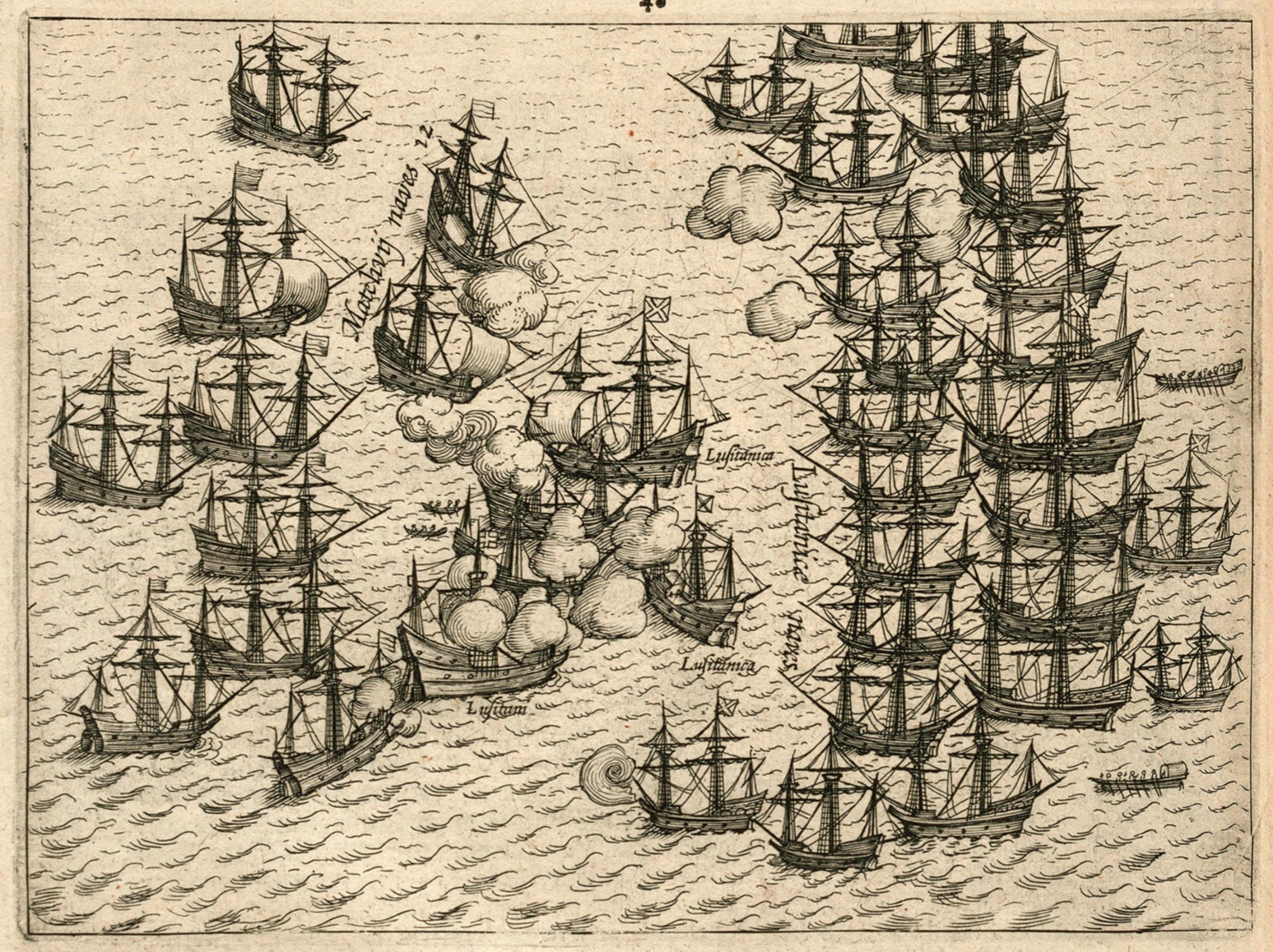
- 1619 – Jakarta captured from the Portuguese by the Dutch (VOC) renamed Batavia – and made the capital of the Dutch East Indies for the next 200 years.
-
1620 – Our friend Fluery and his few remaining men join the Dutch zeeroover captain Hendrick Jacobszoon Lucifer and capture seven Spanish frigates off Campeche Mexico.
-
1622 – The King of Spain receives intelligence that Dutch Prince Maurice of Nassau has outfitted a large military expedition bound for Spanish America. The King becomes convinced that Santiago in Cuba is their destination – but an attack never materializes. By 1623 it is learned that the Dutch fleet had dispersed across the Caribbean in search of Spanish prizes and treasure ships. Many Spanish ships disappear and/or never reach port. It is assumed that the Dutch zeeroovers captured many prizes that year.
The King of Spain becomes paranoid of Dutch interlopers into his New World possessions.
- 1622 – Anglo-Dutch naval victory over Portuguese fleet near Mozambique Africa
-
September 1622 – The Spanish treasure fleet assembled at Havana consisting of 28 galleons is struck by a great hurricane and blown helplessly in a north easterly direction. Eight heavily laden ships full of Spanish gold ingots and specie are lost including the great Almirante War Galleon Margarita which went down on the Matacumbe Keys off the Florida coast. Her sunken hull in shallow water became a site of salvage for Spanish expeditions and pirates alike for decades after. There is likely still treasure there buried under layers of sediment. This is a disastrous blow to the Spanish treasury as the fleet had to reassemble and take months to be refitted and repaired. Bad luck with weather over the next year continued to batter and claim treasure galleons and force the fleet back into Havana and Vera Cruz. No treasure fleets made it home to Spain in 1622 or 1623.

- 1624 – Dutch establish rich successful VOC colony of Tayouan(modern Taiwan)
-
1624 – Spanish officials and the King himself become so convinced of a Dutch attack on Havana, that reinforcements are sent and the Treasure Fleet proceeds back to Spain alone without its usual escort of War Galleons (“Galeones de la Guardia” or galleons of the guard) which remain on station to defend Cuba and Puerto Rico from a possible attack.
-
June 1624 – Dutch Zeeroover Schapenham unsuccessfully attacks Pisco with a ground assault but is driven off by the cities trenches and defensive walls.
- June 1624 – Zeeroover captain Janszoon captures two Spanish Treasure ships at Cape San Antonio Cuba
-
July 1624 – Dutch Admiral Schouten raids the Yucatan peninsula (Mexico) looting and destroying the towns of Zilam and Sisal before lurking around the northwest approaches near Havana Cuba.
-
August 1624 – Dutch under Schapenham blockade Callao and unsuccessfully attack Santiago de Guayaquill burning the shipyards and vessels in the harbor (modern Ecuador)
- 1624 – Dutch capture of Sao Salvador – the capital of Portuguese Brazil – and the subsequent successful invasion and occupation of Brazil by the Dutch for the next roughly 30 years.
-
January 1625 – Rumors circulate that there is a fleet of Dutch pirates (zeeroovers) lingering around Tortuga bent upon finding Spanish treasure ships. The Spanish governor of Havana dispatches a fleet of War Galleons to investigate but no Dutchmen are sighted.
-
September 1625 – San Juan Puerto Rico is seized and plundered by the Dutch under Baudewijn Heindrickszoon. However, their siege of Morro Castle for the following two months is a grand failure and they are finally forced to retreat back to their ships in November after a short occupation. The city of San Juan is destroyed by the frustrated Dutchmen who burn it during their retreat.

- 1625/6 – Spanish/Portuguese forces recapture Sao Salvador
-
February 1626 – Fearing another Dutch attack on Puerto Rico, the Governor of Havana sends reinforcements from Mexico to bolster San Juan’s defenses and help rebuild.
-
February 1626 – Dutchman Baudawijn Heindrickszoon attacks Margarita, capturing the fort at Pampatar and sacking the town. After a week of pillaging the town and slaughtering its inhabitants (1200 killed), ransacking the governors residence and stripping the fort of ordinance the Dutch depart seeing the poverty stricken place not worth holding with increasing Spanish resistance mounting from the island’s interior.
-
June 1626 -Admiral Heindrickszoon occupies Porto Cabanas Cuba, burning one galleon under construction, looting the town and reprovisioning his ships, his goal is to capture a treasure fleet and he moves to blockade Havana and wait. However, he dies of illness a short time later and the fleet returns to Holland.
-
1627 – Dutch WIC (Hendrick Lucifer) builds fort and outpost on the Spanish Main at Oyapoco (Venezuela) but abandon it a year later because of constant Indian attacks.
-
1627 – Piet Heyn attacks Bahia de Todos Santos – Captures 22 Spanish and Portuguese ships.
-
March 1627 – Piet Heyn captures Sao Salvador for the Dutch once more.
-
July 1627 – Dutch zeeroover Captain Hendrick Lucifer pursues the treasure fleet and with his flagship Ter Veere captures two Spanish treasure ships bound for Havana from the Tierra Firme fleet – the Spanish Almirante (War galleon/flagship) the San Antonio commanded by Spanish Captain Miguel Ramirez moves to defend his fleet and puts up a tremendous fight to assist the lumbering stragglers but is captured by the Dutch after a hard won fight.
The Capitana (Vice Admiral’s War Galleon) manages to barely escape. Lucifer rather than slaughtering the prisoners sets them free with one of the galleons after plundering it. The other is so damaged that it is burned and abandoned. Besides the remaining seaworthy prize (the large Almirante War Galleon) the Dutch claim gold, silver, 1404 chests of indigo and thousands of hides.
Satisfied they set sail for Zeeland. Witnessed to have led the attack and fought “as brave as a lion” and after killing at least 10 enemy soldiers himself, Lucifer dies of his wounds a few days later.
- 1627 – 1627 ends up being a very bad year for Spain and a very profitable year for Dutch interlopers (Zeeroovers) who claim 55 known Spanish prizes with various cargoes in total.
-
May 1628 Dutch Zeeroover Admiral Pieter Ita arrives in the West Indies with a WIC fleet and dozens of colonists. Dutch Tobago is founded and named New Walcheren. Ita then spreads out his fleet in order to raid Spanish commerce.
-
July 1628 The Spanish Admiral Alvaro De la Cerda preparing his fleet by mounting extra guns and loading extra ammunition aboard – believed his convoy of two large war galleons and ten well armed merchantmen to be safe from the cruising Dutch squadron of 12 small/middling sized warships commanded by Dutch Admiral Pieter Ita – and so begins its journey from Honduras to Havana. Ita attacks the Spaniards outside of Havana and drives several of their ships aground which were plundered and burned.
Ita manages to capture the two largest Spanish Treasure War-Galleons. The Dutch expedition satisfied in its plunder returns to Holland with an estimated 1.2 million guilders of treasure. The Spaniards underestimating Dutch naval strength in the Caribbean and believing the Dutch to have returned to Holland send the Tierra Firme and Plate fleets on their way – which subsequently run right into the Dutchman Piet Heyn’s attack fleet of 31 warships and 2,700 men.
- September 1628 Dutch Admiral Piet Heyn captures the entire Spanish Treasure Fleet (with cargo worth over 12 million guilders) at the Bay of Matanzas Cuba – bankrupting Spain for the following year. Spain sues for peace – the Dutch refuse.

- 1629 – The Governor of Cuba, desperate for reinforcements and supplies – is assured by the King that he will be reinforced with ships, men and armaments. However, he receives a letter from the Ruling Council that if he wishes to have the men and supplies he must pay for them himself. The bill is a whopping 8,600 Ducats in “double silver”. No reinforcements come but Admiral de Toledo is sent with a fleet to the Caribbean with orders to purge the Leeward islands of foreign invaders.
-
April 1629 – France and England make peace – Treaty of La Suze.
-
April 1629 – Large Dutch fleet commanded by Dutch Admiral Adirean Janszoon Pater and Jan Janszoon Van Hoorn split into four smaller fleets in order to raid and plunder the breadth of Spanish America. The Spanish Viceroy of the Indies hearing that Pater alone commands a single squadron of 26 ships blockading Havana and lingering off of the Florida straights waiting for treasure ships, orders that all Spanish treasure ships will stay in their ports. The blockade proves to be another decisive blow to the Spanish
treasury. -
August 1629 Dunkirk/Spanish navy fleet defeated by Admiral Piet Heyn (Heyn is killed)
-
September 1629 – Spanish naval expedition consisting of 30 warships under the command of Admiral Fadrique de Toledo destroys the fledgling English colony on Nevis and then moves onto Saint Kitts to eject foreign French and English settlers. Many are killed, but many also melt into the interior of the island.
-
September 1629 – with nine Spanish prizes sent back to Holland, Pater moved his fleet to Saint Kitts hoping to intercept the Spanish expedition commanded by Admiral de Toledo which had recaptured Saint Kitts for Spain. The Spanish fleet was already gone. Records are sketchy but Pater may have assisted the English and French in its subsequent recapture. The Spanish victory was short lived and Saint Kitts was back in French possession by October.
-
December 1629 – Dutch Admiral Pater attacks, plunders and burns the Spanish town of San Tome up the Orinoco. On his way back to Holland, Pater raids and burns Spanish coastal settlements at Blanquilla Island and southern Puerto Rico. Pater had failed to capture a Spanish treasure fleet but still sent back many prizes to Holland and was given a heroes welcome. He did not stay long and returned to the West Indies with new orders only six months after his return.
-
February 1630 – Large Dutch fleet of 52 warships and 15 colonial sloops under Dutch Admiral Hendrick Loncq (Heyn’s previous second in command) with 3,800 sailors, 3,500 soldiers, 1,170 guns and hundreds of colonists continue the invasion of Brazil by attacking Pernumbuco, Recife and Olinda.
-
Spring 1630 – After Toledo’s expedition against Nevis and Saint Kitts, Anthony Hilton gathers English and French survivors together (many of which are hunters) and transports them to Tortuga.
-
May 1630 – Two squadrons of Dutch ships consisting of 12 warships and 1,100 soldiers show up at Pernumbuco to reinforce Admiral Pater under Schout Bij Nacht (Commodores) Dierick Ruyters and Jan Gijbertszoon Booneter. With Pater not yet returned they cruise independently with squadrons from Admiral Ita’s fleet. Booneter takes up yet another blockade off Havana to await a treasure fleet.
-
June 1630 – Spanish Admiral Tomas de Larrasparu, commander of the treasure fleet makes a bold gamble and departs from Veracruz – navigating the flota upon an alternative route to Spain avoiding Cuba altogether and taking the windward passage instead. Luckily for him he avoids the Dutch blockades and searching zeeroover squadrons. He successfully arrives with the entire Treasure Flota in Seville with 7 million pesos worth of badly needed treasure for the King of Spain.
-
January 1631 – In May of 1630 the English Guiana Company had established a colony on the Amazon delta called Pattacue and erect a fort called Fort North named after the companies primary founder Sir John North. In January 1631 a Portuguese expedition destroys Pattacue and Fort North. There are only seven English survivors.
-
1631 – Dutch claim and colonize the island of Sint Maarten
- May 1631 – Battle of Albrolhos: A large Spanish relief and counter invasion force attempts to land at Pernumbuco led by Admiral De Oquendo. The Dutch admirals Pater and Thijssen move out to intercept the impressive naval force in order to destroy the Portuguese troop transport caravels. The Spanish move their war galleons in line in a slight concave crescent to protect their un-armed supply and transport ships in a second line behind them.
The Spaniards boast twenty men of war/war galleons in the first line with the flagship – the 44 gun 900ton Santiago de Oliste being the largest. Pater’s flagship the 1,000 ton 46 gun Prinz Willem and Thijssen’s 800 ton 50 gun Geunieerde Provincien arrogantly lead an attack with only half the Dutch fleet following and coming out from Parambuco – believing this force to be more than adequate to defeat the Spaniards. Pater steers his flagship straight at Oquendo’s flagship to board but endures withering destructive fire from four of the Spanish war galleons during his advance.
The Dutch ships all waited until they were in grappling range before firing grape shot and then boarded. The Spanish successfully warded off the Dutch attack dealing the Hollanders a great deal of damage and forcing them to retire back to Recife. The Dutch flagship Prinz Willem was sunk and Admiral Pater drowned. The Spaniards lost 585 men killed and 100 wounded – 240 captured with the Dutch successfully taking one Spanish warship a prize – the 28 gun Buenaventura. In addition, the 700 ton 28 gun San Antonio – the flagship of the Spanish Vice-Amiral – was so damaged she sunk stern first. One small Portuguese war galleon, the 18 gun Nossa Senhora dos Prazeres was also sunk.
The Dutch Geunieerde Provincien was heavily damaged but made it back to port. However, another Dutch warship the 38 gun Provincie Utrecht which had faced off with the San Antonio was so damaged by fire that she was abandoned and sunk. The day ended in a tactical Spanish-Portuguese victory, although Spanish casualties were higher with the Dutch losses at 350 killed and 80 wounded.
Strategically it can be considered a Spanish win even though the Spaniards were forced to retire under a small pursuing Dutch squadron consisting of the Hollandia, Amersfoort, and Fortuijn continuing to fire their longer ranging guns at the battered Spanish fleet from a distance. However, Thijssen and the bulk of the Dutch fleet which had never engaged in battle did not leave port. I believe Thijssen was worried that there might be a second Spanish fleet following behind and he did not want to leave Recife defenseless. Although the Spaniards were not able to land their troops at Pernumbuco, they did successfully land 700 men in reinforcements further down the coast at Fort Arrail do Bom Jesus. The Dutch now feeling threatened by this force, evacuated Olinda and concentrated their forces around Recife.
- September 1631 – Spanish naval defeat off Flanders at the Battle of the Slaak with 80 Spanish vessels (invasion/relief force) sunk, destroyed or captured. 1,500 Spanish killed 4,000 taken prisoner.
-
October 1631 – With reports of eight Dutch warships “holks” and additional squadrons of Dutch pirates (zeeroovers) lingering west of Havana awaiting the treasure fleet from Vera Cruz, Admiral Tomas de Laraspuru puts to sea with a well armed squadron of nine heavy war galleons and patrols out to Cape Corrientes. There they pick up some 37 Spanish prisoners that the Dutch put ashore from their prizes.
The prisoners tell the admiral that their fleet has 26 ships in all, but the Spaniards only ever see eight from Havana. Larasparru continues to patrol around Havana until the Dutch disappear. This allows food convoys (of which the Dutch had been capturing for months) to finally come into Havana from Mexico unharassed, but reports come with it that the Dutch zeeroovers they had been watching, sacked both Campeche and Trujillo and made off with a great deal of valuable stores and cargo.
- 1632 – Dutch built a fortress at the mouth of the Unare River to guard the Unare Salt Pans near the Spanish city of Cumana.
-
February/April 1632 – Spanish Admiral Larasparru once again successfully navigates the Spanish Treasure Flota home to Spain consisting of 58 ships and cargoes worth 8.2 million pesos. The King’s bullion alone is worth 1.4 million pesos.
-
May 1632 – With Recife reinforced, Dutch Admiral Thijssen cruises to Barbados with 22 warships looking for Spanish prey. He cruises up the Leeward Islands and around Puerto Rico before blockading Havana once again and awaiting another treasure fleet not realizing that Laraspurru has already successfully made it back to Spain. With no fleet sighted and a poor amount of Spanish prizes taken, Thijssen sets sail for the Netherlands in September.
-
November 1632 – Fort Amsterdam completed on Sint Maarten

- June 1633 – The Spaniards launch a counter-offensive to retake Sint Maarten from the Dutch. A fleet of 55 Spanish ships to include 24 War Galleons/Man-O-War commanded by Admiral Lope Diez de Aux y Armendariz arrives and demands surrender. The Dutch under Jan Claesz van Campen refuse and a long artillery duel begins between Fort Amsterdam and the War Galleons. 1,300 men are landed and the fort invested under seige.
On 1 July 1633, van Campen with only 77 men remaining requests terms for surrender which are granted. The victorious Armendariz takes possession of the island and leaves a garrison of 300 soldiers behind to improve the fort. The triumphant Spanish fleet with the spoils of Sint Maarten aboard and three captured Dutch prizes in tow, enters San Juan Puerto Rico on 13 July, welcomed by a jubilant population.
- July/August 1633 – Dutch Pirates (zeeroovers) under Van Hoorn, the infamous Dutch pirate “Old Pegleg” a.k.a. Cornelis Jol and the Cuban mulatto pirate Diego Lucifer (Grillo) attack Trujillo and then Campeche with 10 pirate ships. They sack the town, spike the guns, ransom the inhabitants and capture 22 Spanish vessels. They sell four of them back to the Spaniards, keep nine of the prizes for themselves and burn the rest. Van Hoorn returns to the Netherlands satisfied with his cut of the loot and leaves Jol and Diego Lucifer to continue their piratical reign of terror.
-
August 1633 – Spanish Governor Bernardo Arias Montano of Cumana launches an attack upon the Dutch Fort at Unare and 10 Dutch ships in the river there. The Dutch are completely surprised by the Spanish attack and slaughtered. The Spanish destroy the fort.
-
August 4th, 1633 – A rare single ship to ship battle occurs between the Spanish War galleon Triunfo de la Cruz commanded by Captain Miguel de Redin, which was separated from the main convoy bound for Veracruz. They encounter an unnamed 46 gun Dutch ship and exchange devastating gunnery and broadsides from dawn until 10am at which point the two battered ships sail away from one another, the battle a draw.
De Redin’s leg is blown off by a Dutch cannon ball and he loses 15 of his crew and many more wounded. His second in command takes over and they limp into Havana 10 days later.
- September 1633 – Spanish raid the Dutch salters at the Salt Tortugas with 12 piraguas. Five Dutch salt vessels flee and escape. The Spaniards butcher all remaining Dutchmen
-
1633/34 – Continuing pitched battles in Brazil in the European manner – with native reserves and irregulars. The Dutch continue to advance and conquer more Brazilian territory.
-
July 1634 – Dutch fleet under Admiral Johannes Van Walbeeck and French Huguenot army commander Pierre Le Grand, conquer Curacao from Spain and begin the construction of a great Fortress.
-
May 1634 – Four Spanish warships debark a 250 man expedition at Tortuga to eradicate the Buccaneer population. The Spaniards take the multi-national colony completely by surprise and kill the self proclaimed English governor Anthony Hilton along with 194 followers. Thirty-nine are captured including three women. The make-shift six gun fort is razed and two ships seized in the harbor are burned. Once the Spanish leave, the majority of the population emerge from the hills and rebuild once again.
-
October 1634 – Dutch seize the Portuguese fort at Cunhau on the Mamanguape River and plunder the sugar plantations there.
-
November 1634 – Dutch Admiral Lichthart and General Von Schoppe successfully seize the Fortresses of Santo Antonio and Cabedelo, sack the regional capital Filipeia (modern Joao Pessoa) effectively conquering all of Paraiba. The town is renamed Frederickstad in honor of the Dutch Stadholder Frederik Hendrik Prince of Orange and the region occupied by the Dutch for the next 30 years.
-
1634 – The French governor of Saint Kitts and official representative of the “Compagnie des Isles d’Amerique” transfers his headquarters to Tortuga – France formally taking possession of the colony.
-
February 1635 – France forms an alliance with Holland against Spain for the remainder of the Thirty Years War ending in 1648. The French continue to be enemies with Spain until 1659.
-
March 1635 – with a force of 5,500 Dutch reinforcements arriving in Recife Brazil, Lichthart and Von Schoppe go on campaign to eliminate the last pockets of resistance and hold out fortresses in Brazil.
- March 1635 – Cornelis “Peg Leg” Jol and Captain Cornelis Janszoon van Uytgeest in the small 18 gun Dutch fregats Otter and Brack enter Havana harbor under Spanish colors unchallenged. Before anyone actually realizes who they are they have successfully landed pirates on the Havana beaches with the intention of capturing the city and are seizing the ships in the roadstead.
The fort and militia rush to their stations just in time and open fire. With surprise is lost, the attackers focus on the ships in the harbor. Jol and Uytgeest escape with a fully laden Spanish frigate while burning the other harbor ships. They blatantly plunder the ship outside of Havana in sight of the city but out of range of the fort and then release the captives and burn the Spanish ship before heading off into the sunset.
- April 1635 – the Portuguese/Spanish fortress of Arrial do Bom Jesus surrenders to the Dutch and is destroyed.
-
June 1635 – French expedition of colonization arrives on Guadaloupe Island.
-
Summer 1635 – Peg Leg Jol cruises outside of Cartegena in the Otter and goes after some small merchant vessels. However four Spanish coast guard frigates are alerted and chase Jol out of the harbor hoping to capture him. As luck would have it, two Dutch warships under the command of Pieter Janszoon van Domburgh are just outside of the harbor. The hunters become the hunted and the Dutch manage to capture the Spanish vice-flagship after a hard won fight, while the other three Spanish ships escape. Jol releases 150 captives with a note to the governor of Cartegena to reciprocate. Only two Dutchmen, some hens and baskets of fruit are sent in return. Jol then burns the prize and makes off. After seizing numerous other Spanish prizes throughout the summer months, he returns to Holland with the booty.
-
September 1635 – French lay claim to Martinique and land an expedition of colonization.
-
November 1635 – a large Portuguese/Spanish relief force consisting of 30 Spanish/Portuguese warships arrives off Recife to attempt another counter-invasion of Brazil, commanded by Amiral Lope de Hoces. Believing the great Dutch fortress at Recife (reinforced with nine Dutch warships) to be impregnable, Hoces lands 2,400 soldiers, artillery, and supplies south at Lagunas.
-
1636 – Off Flanders a great Dunkirk/Spanish naval defeat inflicted by Dutch Admiral Johan Evertsen
-
1636 – Dutch zeeroover Abraham Hendriksz captures a Spanish ship bound for Puerto Rico with the “situado” payroll for the soldiers of Morro Castle.
-
January 1636 – Dutch occupied Porto Calvo seized by the Spanish/Portuguese army under General de Rojas. Von Shoppe’s army is forced to make a fighting retreat towards Recife. A pitched battle takes place between the Dutch and Spanish at Mata Redondo resulting in the death of the Spanish general and a Spanish retreat back into Porto Calvo. The victorious Dutch regroup.
-
February 1636 – Admiral de Hoces decides to attack Curacao but before he can arrive his fleet is attacked by a smaller Dutch fleet of eight warships which tenaciously batter the Spaniards for half the day before being driven off. The Spanish fleet is so damaged that it is forced back to make repairs.
-
April 1636 – Dutch found the colony of Saint Eustatius island naming it Nieuw Zeeland and erect a fortress on the heights above the colonial port known as Fort Oranje.
-
September 1636 – Spanish militia raid on Tortuga using a captured 12 gun French slaving ship.
-
December 1636 – Spanish launch offensive from Trinidad against the Dutch colony of New Walcheren on Tobago. The Dutch are overwhelmed and the colony destroyed. Most of the Dutchmen are hanged at Margarita and the leaders transported to Spain to be judged by the Inquisition.
-
1637 – The arriving young Dutch (Count) Graaf van Nassau-Siegen with 350 elite soldiers to reinforce Von Schoppe, launch a successful counter attack against Porto Calvo. The Spanish surrender and the assault is carried on up the coastline to the last coastal fort on the Sao Fransico river which
capitulates. The Dutch now control the entire coastline of Brazil. -
August 1637 – Peg Leg Jol has returned to the Caribbean and sights the Spanish Tierra Firme treasure fleet as it departs Cartegena bound for Havana to join the Plata Flota (Plate Fleet). The fleet is escorted by Admiral Carlos de Ibarra and a Spanish Battle Fleet. Jol’s new flagship, the 28 gun frigat Zwolle accompanied by a gaggle of zeeroover and privateer yachts out of Curacao begin harassing the fleet hoping to pick off stragglers. When the Spanish warships move to bear down upon the Dutchmen they scatter and reform. This continues on the voyage to Havana until a straggling galleon offers opportunity. Jol is amazed that the jealous Dutchmen can’t agree on anything and the prize gets away. A disgruntled and disgusted Jol takes up a patrol outside of Havana hoping to get another chance.
-
September 1637 – Jol gets his second chance when part of the treasure fleet consisting of 16 merchant galleons and 4 war galleon escorts are spotted trying to make their way into Havana. However, aware of the Dutch threat, 33 Spanish ships emerge from Havana to assist – threatening to trap Jol between the two Spanish fleets. Jol contents himself in caturing one small Spanish galleon from Puerto Rico before heading home for the Netherlands. Upon his return his complaints of disunity earn him a commission and a command of a WIC fleet with the mission to seek out and sieze another Spanish Treasure Fleet.
-
October 1637 – Dutch zeeroover (pirate) Abraham Hendriksz with a 17 gun fregat, captures a Spanish ship from Puerto Rico bound for the Spanish occupied colony of Saint Marten with the “situado” payroll for the soldiers of the fort.
-
October 1637 – Possibly as a reprisal for the destruction of Tobago, a Dutch expedition goes inland into Trinidad and destroys the Spanish town of San Jose de Oruna.
-
November 1637 – Von Schoppe raids into the interior of northern Brazil against Sergipe del Rey and Sao Sebastiao. The Dutchmen under a Major Garstman rebuild the fort and remain in undisputed possession of the salt mines and ambergris deposits for the next seven years.
-
1638 – French naval victory over the Spanish at Genoa.
-
1638 – Graaf Maurits believing the remainder of Portuguese Brazil near collapse, launches an attack against the last Portuguese occupied area of Todos os Santos on 16 April with 4,600 men. Investing the town under seige and seizing the surrounding territory, Maurits attempts several unsuccessful assaults between the 1st and 17th of May. With degrading conditions and 500 men lost, Maurits retires back to Recife on 26 May to await reinforcements.
-
June 1638 – Peg Leg Jol arrives with a WIC fleet at Recife now commanding the 600 ton 54 gun Dutch warship Salamander. After reinforcing Recife, Jol sets out north with 15 warships and 900 men to attempt bagging another Spanish treasure fleet. Numerous Dutch zeeroover pirates and privateers join him on his way to Havana. In July, Jol joined by Dutch Vice Admiral Abraham Roosendael divides his command to cover the approaches to Havana all the way to the Florida Keys. This strategy proves to be effective.
-
August 1638 – The Tierra Firme Flota of Admiral de Ibarra emerges off Porto Cabanas on its way to Havana from Veracruz. This is an impressive fleet of War Galleons consisting of the Almirante flagship the 600 ton 54 gun San Mateo, the Capitana flagship, the 860 ton San Marcos, the 700 ton Nuestra Senora de Regla and five additional 600 ton war galleons and an escorting Patache.
The Dutch under “Peg Leg Jol” move in to attack the Spanish fleet. On the first day of the engagement Jol’s largest ships the Salamander, Wappen van Rotterdam, and Tholen engage the defending Almirante and Capitana war galleons with heavy damage inflicted on both sides. Three of the other primary Dutch warships are prevented from joining in the main action by a single Spanish fast galleon, the Carmen – which bravely takes on the three ships alone for hours in a rear guard action. Jol is furious with his other captains for not more agressively joining in the fight and utters a hard insulting rebuke after the battle – while making repairs to the fleet in direct sight of the enemy who was doing the same.
De Ibarra meanwhile continued to attempt moving closer to Havana but the winds were against him. Under cover of darkness he finally made the decision to retreat and reverse course back to Vera Cruz with the wind squarely behind them. A lividly furious Jol follows and a half day action ensues with the smallest fastest Dutch ships pursuing and fighting with the Spanish rear guard ships Regla, Sanctiago and Carmen.
The already damaged Carmen was surrounded by a dozen of the small Dutch warships and several of the other Spanish galleons rushed to her defense – running off the small Dutch warships which continued to harass at distance with cannon fire – waiting for the larger already damaged Dutch ships to catch up. The treasure from the brave Carmen was transferred to the other rear-guard galleons and she was abandoned. The Spaniards continued towards Vera Cruz with a strong following wind – which BTW are the only lucky conditions a lumbering galleon with its huge sqare sails would manage and be able to out-run anything. An angry Cornelis Jol is unable to effectively catch his prey before they successfully make San Juan de Ulloa and safety. The Dutch contented themselves with the capture of some of the smaller Spanish vessels, but took no Galleons. They set the Spanish prisoners ashore at Bahia Honda before returning to Holland. This battle would make a great movie IMHO.
- August 1638 – French navy defeats Spanish navy at the Battle of Guetaria with heavy Spanish losses. 17 Spanish warships are destroyed and 5,000 Spaniards killed. French lose no ships and have minimal casualties.
-
1638 – A Spanish expedition commanded by Don Inigo de la Mota attacks Tortuga and attempts once again to dispel its population. In his letter to the King of Spain he writes of his frustration in the matter and lack of success with the inhabitants disappearing into the interior. He describes the inhabitants as nothing more than “Dutch and French pirates”. Over the years from 1636-1640 many more French and English colonists/pirates arrive from Barbados and Saint Kitts as there are no opportunities there for them and all of the land has been claimed.
-
1639/40 – Dutch conquer Batticaloa and Galle (modern Ceylon/India)
-
February 1639 Dutch Admiral Maarten Tromp defeats Spanish/Dunkirk naval fleet off Dunkirk strand under the fort of Mardyck. Two Spanish flagships lost and burned, three Dunkirk galleons captured. This battle effectively spelled the end of any significant further Spanish naval power projected north into Dutch waters.

- September 1639 Dutch attack and naval victory over Portuguese ships in the Bay of Goa India
- October 1639 Dutch Admiral Maarten Tromp’s great defeat of the entire Spanish/Dunkirker fleet at the Battle of the Downs. 40 or more Spanish/Dunkirk warships sunk and/or captured, 6,000 men killed and 4,000 men captured. Dutch losses were 10 ships destroyed/sunk and 1,000 men killed.
-
1640 – Capital city of Mauritsstad built and founded in Dutch occupied Brazil. (Mauritia)
-
January 1640 – Battle of Itamaraca: Large battle fought off of Pernumbuco Brazil between a combined fleet of 30 Portuguese/Spanish war galleons and 34 other smaller armed vessels against a Dutch fleet of 30 warships and 10 smaller armed ships. A lack of wind prevented a truly decisive battle and as a result the action was an inconlusive tactical draw with both side losing 2 warships. Strategically this was a Dutch victory because the 2,500 troops aboard the ships could not land to attack Recife and so had to be debarked elsewhere at Cape Sao Roque. Graaf Maurits was so upset by the conduct of three of his captains that he condemned them to death.

- March 1640 – 28 Dutch warships arrive at Recife with 2,500 troops commanded by Admiral Peg Leg Jol and Admiral Lichthart. Lichthart takes half this force and raids into the still occupied Portuguese areas to destroy their economy. He destroys 27 sugar mills. Peg Leg Jol takes his fleet north to try to find another treasure fleet.
-
Spring 1640 – Spanish expedition of two war galleons and six frigates attempts to dislodge English from their colony on Providencia Island (Santa Catalina). The impassible reefs makes it impossible for the Spanish to land troops under the constant cannon fire of the English fort there and the Spanish are forced to retire after attempting one land assault in which they lost around a hundred soldiers and two officers.
-
July 1640 – French fleet under Admiral Armand de Maille-Breze attacks a Spanish treasure fleet outside of Cadiz just on its way back to Spanish America. The Spanish Admiral Don Gomez de Sandoval orders the merchant galleons back towards Cadiz while he brings his 12 escort war galleons into line to shield them. The battle is a stalemate with both fleets retiring, the Spanish losing one war galleon to the French – classifying the battle as a narrow French victory over the Spanish.
-
July 1640 – Admiral Cornelis “Peg Leg” Jol arrives off Havana with 24 formidably armed Dutch warships and 3,700 men, and sets up a blockade.
-
July 1640 – Dutch reestablish Salt trading outpost at Unare with a pre fabricated fort erected within a week.
-
August 1640 – Carrib Indians massacre fledgeling English colony at Santa Lucia.
-
August 1640 – Spanish overun and destroy Dutch salting station at Unare once again.
-
September 1640 – Spanish governor of Havana successfully gets warning to Veracruz that the Dutch are awaiting at Havana. However, the Dutch threat is quickly scattered by a great hurricane. Four of the ships are wrecked upon the Cuban coast over four days time and one run aground undamaged, but burned by the Spaniards in fear of it being retaken by the Dutch. The rest are scattered from Cuba to the Florida strait. Only one warship and one smaller “schallop” (transport sloop or tender) are actually lost at sea according to Fransican Priests from Florida that Jol set free on the Cuban coast.
261 Dutch prisoners are taken and Jol reassumes station and attempts negotiating ransomes and a prisoner exchange for their release. The Governor refuses even though Jol has 50 Spanish prisoners including soldiers and officers. A week later the remaining battered and regrouped ships of the Dutch fleet head back to Recife. The Dutch prisoners are sent to Spain to be judged by the Inquisition. In other words – death sentences as heretics burned at the stake or galley slaves if they will recant their Protestant beliefs and become Catholic.
- December 1640 – Portugal revolts against Spanish rule.
-
1641 – Malacca (Indonesia) conquered by the Dutch
-
1641 – Dutch naval victory over the Spanish at the Battle of Cape St. Vincent. Although a clear Dutch victory it is regarded as a Spanish strategic win because the Dutch had to send this fleet back to England for repairs abandoning the French and Portuguese ships engaged in the Portuguese Restoration War (1640-1668)
- February 1641 – Dutch naval victory over Spanish fleet off Porto Cabanas. Although none of the large heavily damaged War Galleons are taken by the Dutch, numerous Spanish Captains, noblemen and gentlemen are killed in this engagement.
-
May 1641 – Spanish successfully retake Santa Catalina from the English sending 770 English colonists back to Europe to be repatriated.
-
May 1641 – Dutch seize Portuguese Angola and all of its Slaving stations and outposts.
-
July 1641 – Spanish defeat of the French navy in Catalonia at the Battle of Tarragona. A clear strategic victory for Spain, both sides claim victory with the Spanish casualties far outnumbering French (50 Frenchmen killed, no ships lost vs 2,000 Spaniards killed and 12 ships destroyed)
-
October 1641 – Dutch sack Gibraltar on the approach to Maracaibo.
-
November 1641 – Dutch attack and successfully seize Maranhao and the Island of Sao Luis.
-
1642 – Dutch VOC conquers northern Formosa from the Spaniards.
-
1642 – Portuguese naval victory over the Spanish
-
June 1642 – English Civil War begins. The “Roundheads” win the war in 1649 and Charles I of England is beheaded. England becomes a Republic under Oliver Cromwell for the next 12 years.
-
July 1642 – French navy defeats Spanish navy at the Battle of Barcelona. The French bringing two Mediterranean fleets (Levant and Ponant fleets) together boasted 30 large men of war, along with 10 chartered Dutch and English warships and smaller warships bringing French strength up to 60 or so vessels. The Spaniards so desparate for ships to prevent further French incursions into Catalonia, began to seize private merchant vessels outfitting them for war in preparation. The Spanish also began drafting common tradesmen and citizens from the country side as well. They managed to raise 30 large galleons and another 35 smaller ships and 3,500 men. Although the Spanish lost their desperate defence was impressive and the high point of the battle was a turning of a French fireship around to catch the huge French flagship Galion-de-Guise on fire destroying it with over 500 killed including the French Vice-admiral Hercule de Conigan de Cange.
-
August 1642 – French Governor LaVasseur and his Buccaneer allies land on Tortuga unopposed and depose the self proclaimed English governor Captain James Flood. LaVassuer renames Tortuga as New Normandy. An engineer by trade, he begins construction of an improved fortress on the heights above the harbor.
-
September 1642 – English squadron of five small warships under William Jackson arrives in Barbados and begins to hunt for Spanish pearl ships.
-
October 1642 – Spanish raid Bonaire. Kill many horses and livestock, but many Spanish soldiers parish, drowning trying to get back to ships.
-
November 1642 – Dutch governor of Curacao, Peter Stuyvesant launches punitive attack in answer to the Bonaire raid. Two Dutch warships assault Porto Cabello and sink four Spanish frigates. The Dutch then rustle and seize 2,500 cattle, sheep and goats from locals to restock Bonaire.
-
December 1642 – English expedition of eight small warships under Captain William Jackson raids Maracaibo and the surrounding area. (*Note: the same Jackson that later successfully takes Jamaica for the English in 1654)
-
1643 – French naval victory over the Spanish in the Mediterannean at the Battle of Cartegena off the Catalan coast.
-
May 1643 – Dutch seize Spanish outpost at Carelmapu in what is now southern Chile.
-
February 1644 – Portuguese irregulars retake Sao Luis.
- March 1644 – Dutch governor of Curacao, Peter Stuyvesant launches an attack to retake Sint Maartin. With five Dutch warships and a dozen other merchant and supply ships Stuyvesant first forms his ships into a semi-circle to bombard the one single fort the Dutch had originally built and the Spaniards reinforced, guarding the harbor. Stuyvesant personally leads the ground assault and the Spaniards put up a fiersom resistance – throwing back the Dutch attack. Stuyvesant is grievously wounded and his leg must be amputated as a result. Now matching Jol, he wore a peg leg for the rest of his life and as the later governor of New Amsterdam (now New York). The Dutch attack is a failure. The Spaniards later abandon the colony to reinforce Puerto Rico only three years later and the Dutch reoccupy it.
-
1645 – Although the King of Portugal is at peace with the Dutch in Europe, has officially recognized their claim and sovereignty to Brazil, and needs their help against Spain – he secretly supports an independence movement in Brazil to eject the Dutch. He secretly sends leadership, arms and money to begin a long guerilla conflict to retake Brazil from the Dutch. Numerous revolts result and the Dutch find themselves increasingly at odds with both the Indian natives and the Portuguese population. Their brutal
atrocities in putting down these revolts cause even more animosity against them – which results in a pro-Portuguese underground movement of liberation. -
1645 – Dutch naval victory over Portuguese at Tamandre Brazil
-
1646 – Final Dutch attempts to conquer the Spanish Phillipines ends in disaster with the Spanish victory at the Battle of La Naval de Manila. The Dutch are forced to retire with two ships lost and three warships heavily damaged. Dutch casualties 500 dead vs Spanish casualties 15 dead.
-
January 1648 – Spain and the Netherlands make peace.
With the Treaty of Westphalia concluded, Spain was now at peace with Holland and immediately requested they form an alliance with them against Portugal. Although the Dutch were heavily engaged with the Portuguese in both the East and West Indies, they refused to ally themselves with Spain. With the Eighty Years War and Thirty Years Wars being finished the Spanish had a respite to recover from all of the open piracy upon their ships and possessions in Spanish America.
The Spanish Crown also no longer needed to expend the immense sums necessary to sustain war in Flanders any longer. Regardless of this, the Portuguese War of Restoration was still in full swing and so was the Franco-Spanish War (1635-1659) which would continue for over a decade more and was very close to home with Spain being challanged on both her northern Iberian boundaries, in Catalonia, and in her valuable Italian possessions as well.
France had never been a great naval power, but Cardinal Richelieu had been trying to change that. After his death in 1643, the French navy once again slowly fell into decline. Young King Louis XIV took the throne almost simultaneously at only 5 years old, however his regent was Cardinal Mazarin who effectively ruled France until Louis took over in 1661.
Mazarin was not that interested in the navy and during most of his tenure was much more concerned with the army because of the Fronde (French Civil Wars). while not that interested in expanding France’s ship building industry, Mazarine did allocate necessary funds to buy as many warships possible from any foreign government’s shipyards that would sell them – especially the Dutch.
While we have already mentioned the Dutch State and West India Company sponsored expeditions against the Spaniards, there were many other independant Dutch Gentlemen of Fortune who also headed to the New World to prey upon weak Spanish possessions and ships ripe for plundering. With Holland now at peace with Spain, but France still at war, these Protestant Dutchman known as Zee Roovers (Sea raiders / Sea robbers) flocked to Tortuga as well to join their Huguenot brothers in continuing to attack Spain’s
wealth.
You’ve already read here about the piratical antics of Cornelis “Peg Leg” Jol who became “legit” after a time as so many others also did. The partnerships, ventures and pirate flotillas that emerged from this cooperation were the beginnings of the now historically well known Caribbean pirates – which are now classified in English written histories as the Buccaneers.
Spain was horribly weakened by decades of war and especially in struggling to keep her wealth flowing from the New World when so many interlopers were interfering. It has always amazed me that the English seem to get all of the attention when it comes to pirate celebrities in common modern writings about this subject.
This really is NOT a fair accounting of the period when we know from the surviving documentation of the times many of the notable names and nationalities of the most active and successful captains of this time. When one makes a comprehensive list of these men – the Englishmen are a minority among the Frenchmen and Hollanders.
As you have read in the timeline above, the Spaniards from the beginning tried to root these men out of the Tortugas, but their expeditions were mostly unsuccessful. After the Spanish destruction of the Nevis colony and de Toledo’s expedition against St. Kitts, numerous English and French colonists (hunters) were transported to Tortuga in 1630. For a time the Englishmen were a noticeable segment with the English Providence Company attempting a charter to colonize both Tortuga and the Bahamas.
They called the island during this short lived attempt, “Association Island”. Obviously the Spaniards refused to recognize any foreign charter or claim and they invaded Tortuga proper on several occassions with sizeable military expeditions.
In 1654 they again got their chance to retake the island. Informants telling Spanish spies that most of the buccaneers had left Tortuga to hunt for prizes, gave them their opportunity to attack the island while it was poorly defended. The Spanish finally successfully retook Tortuga by force with 800 men and left an armed garrison of 500 men behind.
They seized 500 colonists (men, women and children) and deported them to Hispaniola. The Spaniards took heavy casualties in this attack as French governor La Vassuer had already heavily fortified the island since the mid 1640s. This Spanish garrison found itself alone and immediately harrassed by the remaining buccaneers and settlers who had melted into the hills. The Spaniards completely failed to realize what had happened on Tortuga and what it had become.

By 1640, The Brethren of the Coast had formed. This was an important independent group of multinational pirates who were beholding to no government and in many ways were a loose government in and of themselves with a definative heirarchy based on reputations, success and fear. In 1646 Spanish spies had reported that the island was mainly inhabited by Dutchmen and Frenchmen.
Moreover, an increasing number of Englishmen were coming onto the scene. By 1650, the French governor LaVassuer wanting to make a legitimate colony out of Tortuga imported hundreds of prostitutes and hundreds of more female criminals from France’s prisons. Suddenly Tortuga became a much more popular place to visit than it already was by passing non-Spaniard ships. In 1653 French governor Le Vassuer who had built the great fortress of La Roche above the harbor, was murdered by one of his lieutenants for taking his girlfriend as his mistress.
De Poincy appointed Chevalier le Fontenay as the new governor. His primary mandate was to try to gain proper French control of the island over the Brethren of the Coast. This was obviously a tall order. The Dutch zeeroovers had already made a regular base of the island for the preceeding two decades. With the English Civil War over in 1651, more English ships began venturing into the Caribbean once again.
The First Anglo-Dutch War (1652-1654)
However, 1652-1654 proved to be a hard time for Englishmen in the Caribbean with the advent of the 1st Anglo-Dutch War. Holland lost this war to England although some historians say it was a draw. In European waters the Dutch lost the majority of battles yet ejected English interests in the Mediterranean.
Globally however, the war was disasterous for the English. The Dutch accounted for nearly 20,000 merchant ships globally by the 1650s with the English lagging far behind with only a 10th of that number. Most Dutch merchantmen of the time were well armed and often used as warships. This is one of the reasons the Dutch lost battles in their home waters because most of their navy itself were merchant built trading warships against Englands larger purpose built capital warships.
Hundreds of English prizes flowed into Dutch ports from all over the world captured by ZeeRoovers from 1652-1654. The Mediterannean was cut off from English trade and the Caribbean was largely isolated as well. This war was bankrupting England and the merchants bitterly lobbied the Lord High Protector (Cromwell) and Parliament for it to end.
Economically speaking the English could not continue with this very unpopular war and finally peace was made. The Dutch had taken the opportunity to expand even more both domestically and abroad, and with lessons learned from the loss of the large home waters battles, began building a purpose built professional navy with large capital warships that could hold their own with any other nation’s largest men-of-war.
The Portuguese were the big winners from this conflict – with the Dutch distracted fighting the English. Portugal mounted its largest military expedition yet with 77 warships to lay seige to Dutch Recife in 1653. The Dutch surrendered one of their greatest and longest held foreign possessions in less than a months time in January 1654. The Heeren XIX for the WIC (Board of Directors or Council of Lords) decides that holding Brazil is no longer profitable.
With a population of 1.5 million people, the Netherland’s greater territorial ambitions in the New World would never be realized. Holland begins abandoning its Brazilian possessions and relocating colonists to other French and Dutch possessions including Surinam which is the Netherland’s most profitable colony in the West Indies with vast areas yet to be settled.
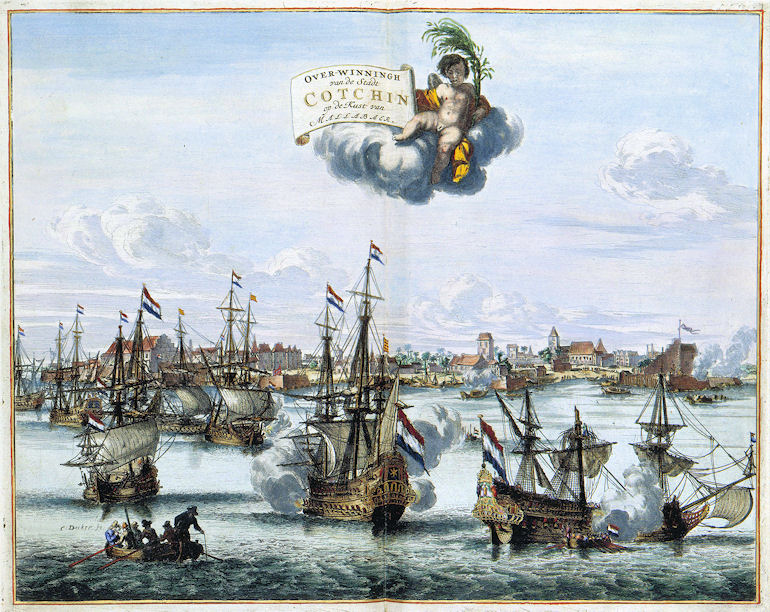
By 1661 all of the Dutch strongholds and colonies in Brazil went back to Portugal with a treaty signed at the Hague – the Portuguese agreeing to pay the Dutch 4 million cruzados for the territories return. The Dutch-Portuguese War had lasted from 1602-1661 and even though the treaty was signed, it did not officially end in the war in the East Indies until 1663 when the Dutch seized Kochi from the Portuguese.
The great Eastern Spice Empire was now almost exclusively in the hands of the Dutch who enjoyed a virtual monopoly on the Spice trade. Only Portuguese Goa and Macau remained which could never be taken by the Dutch.
![]()
With the “Dutch War” concluded, England desperately needed to raise capital, bolster its bankrupt treasury, mend its economic wounds and expand in competition with the ever-present Hollanders. As a result, a massive new plan of “Western Design” was implemented by Oliver Cromwell.
This meant more merchant ships funded and built. More ventures of trade sanctioned and funded by the government, more colonial ventures and expeditions mounted into the Caribbean, and lastly another war was needed that would not be economically disadvantageous as the last one had been. In 1655 England once again declared war on Spain.
With Spain and France still embroiled in their own civil wars – England back at war with Spain again – France still at War with Spain until 1659 – most of the great powers were much more concerned with European conflicts on their front doorsteps, than with matters far abroad.
Spain still involved with the Catalonian Revolt (ending in 1659) and still at war with most of the major European players (and Portugal until 1668) found herself fighting to hold together a disintegrating empire. With the Netherlands now at peace with everyone except an enfeebled Portugal, the United Provinces could continue to concentrate most of its efforts on its great mercantile companies and economic ventures into the East and West Indies.
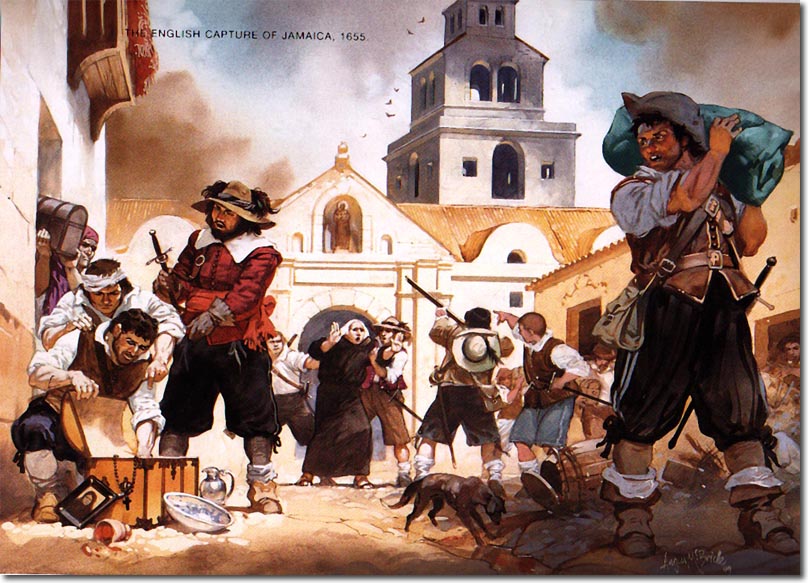
So we find ourselves focusing on those pivotal years of 1654-55. These years proved to be a very important time for the entire Caribbean for many reasons. The most important was the deliberate armed seizure of Jamaica by the English. The English were back and they were back to stay. When the English heard of the Spanish attack on Tortuga they rushed north under one Elias Watts to assist in its recapture. Watts had obtained a commission to become the next English governor of the island – something that most of the local inhabitants really didn’t care about, respect, or recognize.
The Spanish garrison was forced back to Hispaniola in the next six months time and gone by 1655. Between the arrival of the Englishmen and the return of many of the captains of the Brethren of the Coast (and who were by now really far too invasive, entrenched and powerful for Spain or any other colonial government to challenge), they forced all of the remaining Spaniards off the island. Although both England and France claimed the place, it was apparent by this point that they did not control it – and who was actually in charge.
Regardless, governors could be useful and Watts as English governor of Tortuga gave permission for the first sanctioned piratical venture of these Buccaneers of Tortuga. They wanted revenge against the Spanish for the invasions and they got it. Over 500 buccaneers attacked Santiago and plundered it for over 24 hours, looting the churches and the palace – even taking the church bells. In addition they took the Spanish governor – hiding in his bed – prisoner. After the ransoms were paid and the loot divided, the buccaneers ended up with 300 crowns a piece. With only 20 casualties this proved to be a very profitable first venture.
Some say that Pierre LeGrande’s exploit in taking a Spanish galleon with a single small boat was the first piratical action out of Tortuga, but this is obviously false. We already know about the Dutch raids that were launched from Tortuga in the 1620s. In addition, its possible that LeGrande’s story is a complete myth. I for one would like to believe it’s true, (I mean its an awesome story) but we don’t even have a date and only one source for the narrative.
The English subsequently assigned Frenchman Jeremie Deschamps as governor of the island in 1659, but Deschamps on taking over the position declared that Tortuga was French. The English tried to take the island from the buccaneers twice – unsuccessfully – during the next year. As a result a mistrust of the English settlers occurred and many were forced to relocate to Jamaica.

So here we have all of the players in place and the conditions perfect for a massive, large scale, organized criminal enterprise. With Spain enfeebled by decades of continuing war and very aggressive attacks, she could not effectively defend either her vast shipping and widely spread out colonies. The Dutch now at peace with the Spanish found many of their zeeroover captains hiring out their swords and ships to other countries (France for instance) and many chose to go independent altogether- plundering
shipping under the black flag on their own regardless of their native country’s treaties and agreements.

The English now back on the scene and heavily concentrated in Jamaica – steadily formed the next great wave of piratical adventurers and the next great pirate stronghold of Port Royale. Port Royal – a place with the greatest and most debauched reputation of piratical history – an infamous wretched hive of scum and villainy (“we must be cautious”). Last, Tortuga is now both independent and much too strong in terms of men, ships, and fortifications for the Spanish to really ever attempt taking again.
The filibustiers, freebooters, zeeroovers, buccaneers, and Gentlemen of Fortune all living there or regularly operating out of Tortuga were now untethered to work in concert together in violent criminal schemes to enrich themselves, at the expense of the Spanish Empire – and whomever else they chose to rob on any particular day.
The GREATEST CLASSIC ERA of ORGANIZED CRIMINAL PIRACY had begun.
The problems began immediately. These so called “buccaneers” were of every western nationality(although the vast majority Protestant as far as religion was concerned). Some were loyal to their mother countries but many were not. The Dutch had been using state sponsored piracy as an effective tool of war for decades, and so had the English to a lesser degree – now other governments would get in on the same action.
The English would become the greatest hypocrits of them all during this classic era of buccaneers, with a whole string of governors of Jamaica encouraging, sponsoring and harboring known pirates (buccaneers) – (Governor Henry Morgan was even one of them)! At the same time they would assure other governments that they were doing no such thing and were taking every appropriate action to find, subdue and bring these pesky buccaneers to justice!
Sometimes these differing groups of buccaneers, filibusters and corsairs from different nations would work together – Morgan’s and DeGraaf’s raids are both good examples of multi-national “corsair cooperation” but much of the time they would not. This became more pronounced as piracy declined and nations became more empowered and organized over the last decades of the 17th century. As examples, just look at the English buccaneers against Dutch Tobago or Cassard’s French corsaires at Curacao to observe focused national loyalties being tapped into.
Much of the time these pirates were very unpredictable, however, many of their leaders and the great captains of piracy that would emerge in the decades that followed the inception of the Brethren, were often VERY predictable. Greed and a desire for wealth is an obvious motivation. However, we must not overlook others. Hate was often a very powerful motive and motivation as well – just as it had been for the Huguenots a century before.
By 1664 a new Governor arrived at Tortuga, Bertrand D’Ogeron and brought with him French administrators, ships, soldiers, and colonists. Even as France and the French West India Company (FWIC) tried to impose their control upon Tortuga through governor D’Ogeron who offerred incentives to the buccaneers to work and privateer for the FWIC – (and who discouraged Frenchmen NOT to take up profitable ventures with local Hollanders any longer), the French buccaneers and corsairs mostly ignored these recommendations.
Many of them already had close working relationships with their zeeroover comrades and had been with them on many adventures for years. The French government’s and the governor’s wishes were (for the most part) overtly blown off by the likes of L’Ollinais and his captains who were willing to take the French government letters of marque/ orders of commission – but only used them/adheared to them when it was advantageous to the situation. They also still openly covorted and conspired with the many Dutch captains on Tortuga taking part in numerous well known ventures with them.
As we discussed in Part 1, San Juan was not on the traditional route for the Treasure Fleets, but due to bad weather or pirate threats, ships from the treasure fleet did occassionally put in at San Juan. Pirates could only ever hope to catch a single straggler or two from a Flota as they were generally way too large of prey for most pirate ventures. In the timeline I presented above one can see many examples of Dutch successes in the “cutting out” of rich stragglers from the greater treasure flota convoys.
Putting the treasure fleet completely aside now, (with the exception of the years 1651-1662) there were also many other kinds of ships that regularly sailed in and out of San Juan. Some of these were very rich prizes stocked with valuable import and export goods. Occassionally a payroll for the soldiers of San Juan’s garrison could be taken as well as we also saw happen in the timeline above. We know from numerous surviving historical accounts that buccaneers haunted and hunted the waters around Puerto Rico for the better part of the 17th century and Golden Age of Piracy.
We will discuss some of the evidence of Spanish pirates and specifically pirates who sailed out of San Juan in our next installment. Lets begin with others who we know (or we believe) had dealings with Puerto Rico. I think it is very possible that a few odd known pirate captains who had a talent for forging papers or masquerading their vessels as Spanish ships, likely put in at San Juan for provisions, recruiting, and possibly amusement.
We know that Labat did and we will talk about that in our next installment as well. There are even a few fragmentary bits of anecdotal secondary accounts of L’Ollinais himself both putting in at San Juan and/or exchanging gun fire with El Morro when he got too close and was identified. (FROM ERAS: “Warning: The Spaniards have identified you as an enemy!”)
I am trying to find out if these shreds were at one time merely concocted for the benefit of ignorant tourists many years ago and have taken on a life of their own(famous rumors), but it is a difficult task that I may never accomplish. My Park Ranger friends at Morro and at the Museo de la Mar both had never heard this before. One of the Rangers did say he had heard that L’Ollinais’ ship had been identified and fired at, but didn’t know if it was true and had never looked into the matter further. This could just be local folklore.
I find it very hard to believe that L’Ollinais would ever have actually put in at San Juan. Why? Because he was considered the “Bane of the Spaniards”. He hated Spaniards more than almost any other pirate one can think of. He is known to have given crews “No Quarter” and is famous for literally extracting the fresh beating hearts of Spaniards from their chests and eating them. (Seriously – witnessed and written about in historical narrative!) We also know that one of his preferred hunting grounds for Spanish ships was in the calm waters between western Puerto Rico and Santo Domingo on Hispaniola (modern Haiti/Dominican Republic).
I want to make one last observation before continuing. Numerous authors mention that the decade 1650-60 was an economically abysmal time for Puerto Rico. The period from 1655-1685 is the height of the “Buccaneer Era” where we find an immense amount of piratical raids both strictly piratical and state sponsored. After a little more discussion I will present another chronological timeline in our next installment so that one can see the events in a greater context and how they would have affected the region geo-politically and economically. This is an era where we find Puerto Rico in an increasingly isolated state from the rest of Spanish America. Think about it. Tortuga and Hispaniola became French (with the exception of Santo Domingo).
ALL of the Leeward Islands/Lesser Antilles were occupied by foreign nations – not one was left in Spanish hands. Puerto Rico stood almost alone, and the reason none of these great pirate lords like Morgan or DeGraaf never ventured to go after her was largely I believe because of her great and improved fortifications in Morro Castle – which we will also talk about its completion and by who in our next installment.
So with all of the piracy and privateering and geographical isolation, lets consider an observation by one of my favorite historians – David Marley – who says: “Not a single Spanish merchantman visited it’s (San Juan’s) harbor between 1651-1662…” While no Spanish merchants may have visited San Juan, I have proof of Dutch ships coming to San Juan from Curacao at this time and some smatterings of smuggling activity as well. Still the observation is very poignant and reflects just how effective pirates and the influence of foreign navies and privateers were on both Spain and this region during this period.
SHREDS OF EVIDENCE
So now that we have painted a fairly good picture of the Caribbean of this time and the situation, lets examine the fragmentary shreds of enticing evidence that are left for us to sift through regarding San Juan and Puerto Rico. Really this is my favorite part and unfortunately for you – you will have to wait for the next installment to read about most of these gold nuggets! I will try to put this in some kind of chronological order as I did with the previous timeline.
As I said above, I hate the modern English written classifications of the pirate eras and believe the overlap is much more extensive and blurred than commonly printed. Nothing about this time fits neatly into a box and cannot be sharply differentiated by neat segmented boundary lines. Sorry that’s just the truth of it and many modern historians don’t like that or refuse to accept it. Just look at our timeline above. With the activities you see there coupled with my explanations we know that state sponsored piracy and the “boucaniers” and their organization happened WAY before 1650.

Honestly IMHO 1630 might be a much better date to attempt to pin on the so called “Age of Buccaneers” beginnings when we examine the larger picture of everything going on at the time in context. The Dutch Historian Alex Ritsema defines it as roughly beginning in 1630 as well and I heartily agree.
I have not even presented a fraction of my research here (or even any sources or notes – which is deliberate BTW LOL) that one will find in my yet unpublished book on piracy.
Suffice it to say that one of the defining artifacts of this time (that buccaneer captains are supposed to possess LOL) is the elusive letter of commission, “Concession de Marque”, “Karta Kommissie” or “Brief van de Commissie” – Letter of Marque and Reprisal, which are granted by the state or someone of importance and then used by ship’s captains to justify their actions when advantageous or upon a time when its necessary to appear legitimate – otherwise when no such entaglements present themselves, pure piratical actions can be undertaken without need of such documents.
We know from our discussion about the Huguenots that Le Clerc’s Letter of Reprisal issued by the French King in 1535 is the First known “Letter of Marque”.
Lets now consider that the first English granted Letter of Marque (I have been able to find in my own research) issued for use in the Caribbean of our period specifically – was granted by the the Duke of Buckingham – to one Captain John Rose of Bermuda acting as commander of a ship named Sumer Island. GIVEN IN THE YEAR ….. wait for it ….. 1627. That will be enough to make my point for the time being…
So before I leave you with all of the information above to consider to await my next installment (PART 3) in which I will truly present all of the great pirate personalities germane to our subject who lived in the later half of the 17th century and into the early 18th (the Golden Age), I will give you this first “pirate” story involving Puerto Rico. This story predates even the time of buccaneers, but also continues on long after.
THE ISLAND OF CAJA DE MUERTOS: “Coffin Island” or “Dead Man’s Chest Island”
On the southern coast of Puerto Rico lies Dead Man’s Island. Now a protected nature preserve easily reachable by ferry, its mostly haunted by hikers, nature lovers, and bird watchers now who are oblivious of its piratical history. So bottom line up front, what most people do not realize is that this very island could possibly be the one that inspired Robert Louis Stephenson’s own landmark book of pirate fiction “TREASURE ISLAND”!
There are numerous stories about how it got its name. Since 1511, the island has been called by many different names: Isla Abeiranas, Abairianay, Antías, Jutías, Yautías, Utías, Abeianay, Angulo, Isla Bestia, and Isla del Tesoro and in other translations as Coffre A’morr, Deadman’s Chest, and Coffin Island.
One story about how it got its name concerns a Portuguese pirate named Jose Almeida. Almeida fell in love with a Basque lady living in Curaçao and they were married. The story has it that he took her on his pirate adventures across the Caribbean. With his beautiful wife killed by a stray bullet in one of his raids, a grief stricken Almeida had her body embalmed and placed into a glass casket inside of a thick copper coffin. He then buried her in a cave on this island. It is said that he would come often to gaze
upon her and leave plundered treasures in the grave with her. Almeida, however, was caught, put on trial at San Juan and executed at El Morro Castle. Rumor has it that some years later, a Spanish surveyor and cartographer discovered the glass and copper coffin, and identified it on the cay, labelling it upon his own map which would be copied and distributed – giving the island its current name of Caja de Muertos. If the treasure was found, it was kept secret. I can find no reliable evidence that this story is actually truly historical – but its an awesome story nonetheless.
Another possibility is that the island got its name because it resembles someone lying down when seen from the main island. In 1901, it was suggested that the island’s name may be related to the sea shanty “Dead man’s chest”, popularized by Robert Louis Stevenson for his novel Treasure Island. However, there is not concrete historical evidence for this.
The official version of the origin of the name, from the Puerto Rican Department of Natural Resources – is: “Its name is attributed to the 18th-century French writer Jean-Baptiste Labat who called it Coffre à mort (Caja de Muertos) or Bomba d’Infierno, making reference to the fact that when the island is seen from certain places in southern Puerto Rico, it gives the impression of seeing a dead person laying on a plateau.” I find this one the most plausible and we will talk about the elusive and fascinating Pirate Priest Labat’s visit to/and other involvement with – Puerto Rico shortly. However, there is still one more historically based story on how this island got its name that we must cover.
In 1599, a group of English gentlemen adventurers/merchants ventured off to China with a letter from Queen Elizabeth to the Emperor of China. One ship was lost in a storm Off the Indian coast. While the other ships regrouped and repaired their vessels, their captains decided that instead of continuing on to China, they should rather turn to piracy. Learning about a great Portuguese ship filled with treasure, silks and spices, they attacked and captured the vessel.(*NOTE: Remember a similar such ship – the Madre de Deus from 1592 that we covered in our last installment).
The little English fleet managed to capture another vessel, but in the process lost its flagship and a large part of the crew was killed or grievously wounded, including the fleet commander. Shorthanded and lacking senior leadership, the group split up. (I wondered if this might be how Blackthorne from SHOGUN ended up in Asia with the Dutch LOL – just writing out loud LOL – sorry…) One group decided to return to England aboard one of the smaller ships taking their share of the loot.

After surviving more bad weather and a failed mutiny, the Englishmen instead of going back to England headed for the Caribbean. After arriving on the south coast of Puerto Rico at Dead Man’s Chest Island, the crew desperately moved their cargo ashore because their ship was so unseaworthy that she could barely stay afloat. They rested and took refuge on the island but were short on provisions and so decided to sail to Puerto Rico proper. Their ship now beyond repair was beached in shallow water and the survivors carefully ventured inland to look for food. One or more of the Englishmen left behind to watch the boat(s) were captured by Spanish locals and they let the cat out of the bag about the treasure on the island.
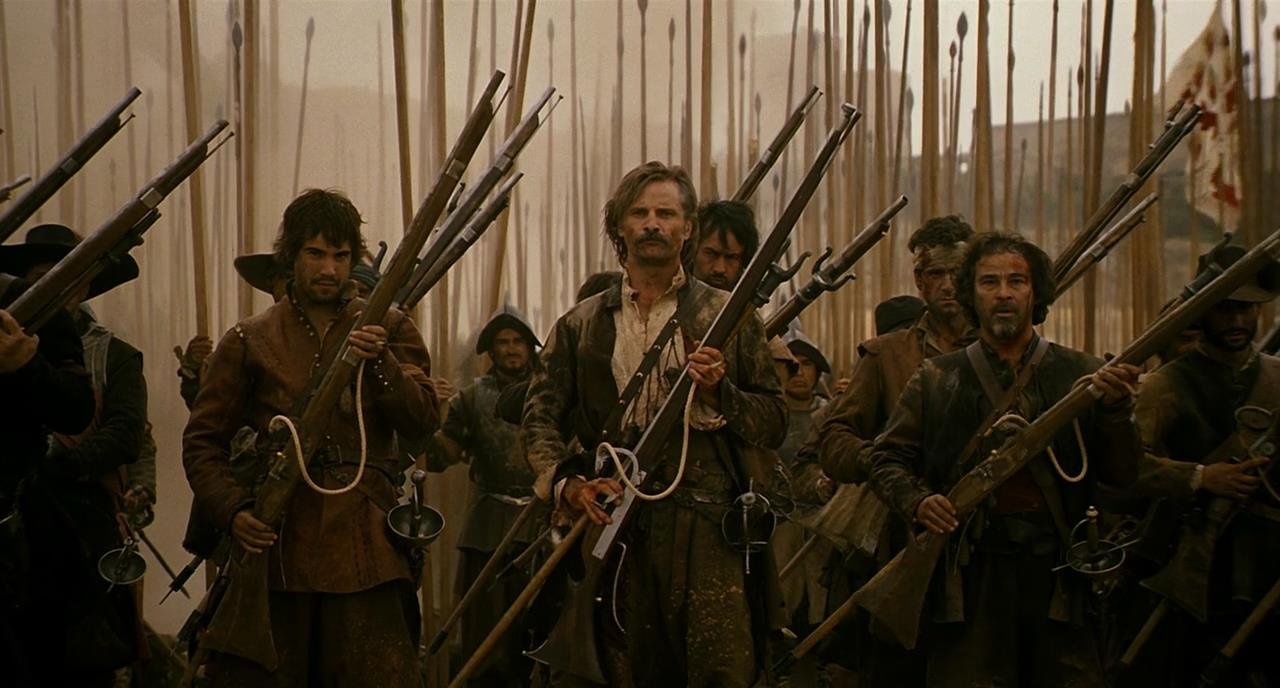
A group of Puerto Rican militia learning about this supposed English cache of booty led an expedition to find and salvage the treasure. The Englishmen were reportedly killed despite negotiations with the Spaniards. The Spaniards found the treasure and took it back to Puerto Rico – reporting it as being captured in a battle with the English ship. Apparently the lone survivor, a man named “Thomas”, built a raft and sailed across the channel to Puerto Rico.
Going to San Germán, this man told his version of the story to officials. The governor of Puerto Rico grew suspicious and an investigation was launched in late 1599 into 1600. This lead to a confession by one of the murderers. The authorities then confiscated the treasure seized by the expedition’s members. Much of the treasure is said to have “disappeared and reportedly ended up in the hands of the governor’s own nephew.”
The confiscated treasure was then auctioned off, with only 4,000 ducats of Indian silver remaining by 1602. The next governor sold off even more, with a collection of jewels and ingots that were left behind. The last piece, a large gemstone, was sent back to Spain. From these events, the island is supposed to have got its name of “Isla de Caja de Muertos” (“Dead Man’s Island”). It’s an interesting story. I wonder if it could be true or if any treasure was left behind? Surely many more pirates and Gentlemen of Fortune would have stopped over at this island briefly over many decades. I can almost hear Long John Silver’s parrot now…
“Pieces of Eight – Pieces of Eight!”

Pretty cool story eh?
Well I know this is a lot of information to take in. But there is still TONS more awesome information and stories to come. I think I have done a fairly good job of painting the back drop now with a lot of “Happy little Trees” and such to think about. Next time (which I promise you wont be that far in the future as the last installment was in the past) we will talk about the players and their activities surrounding Puerto Rico directly during the great “Age of Buccaneers”.
Talk to you again in a few weeks.
MK
by modernknight1

